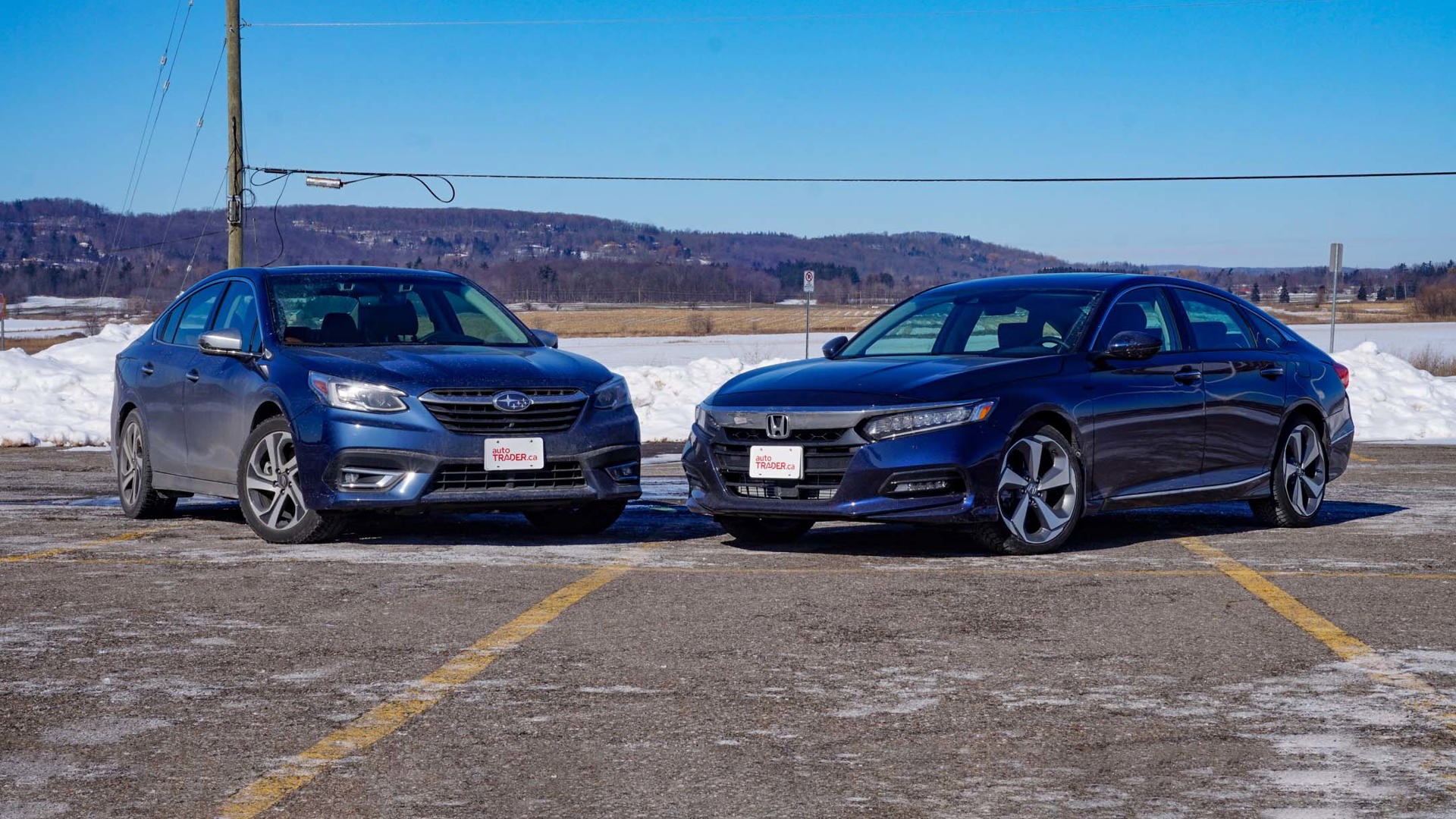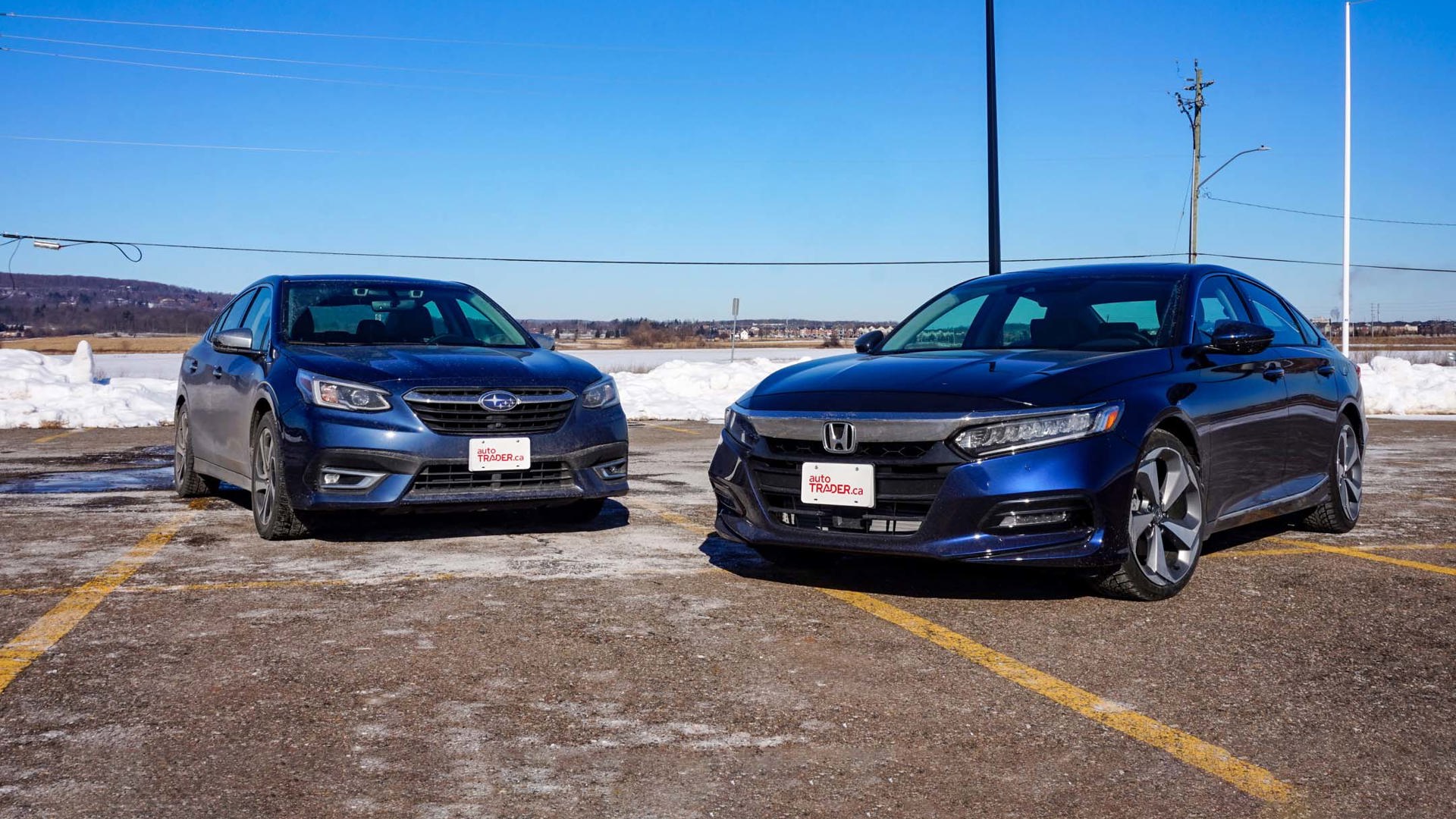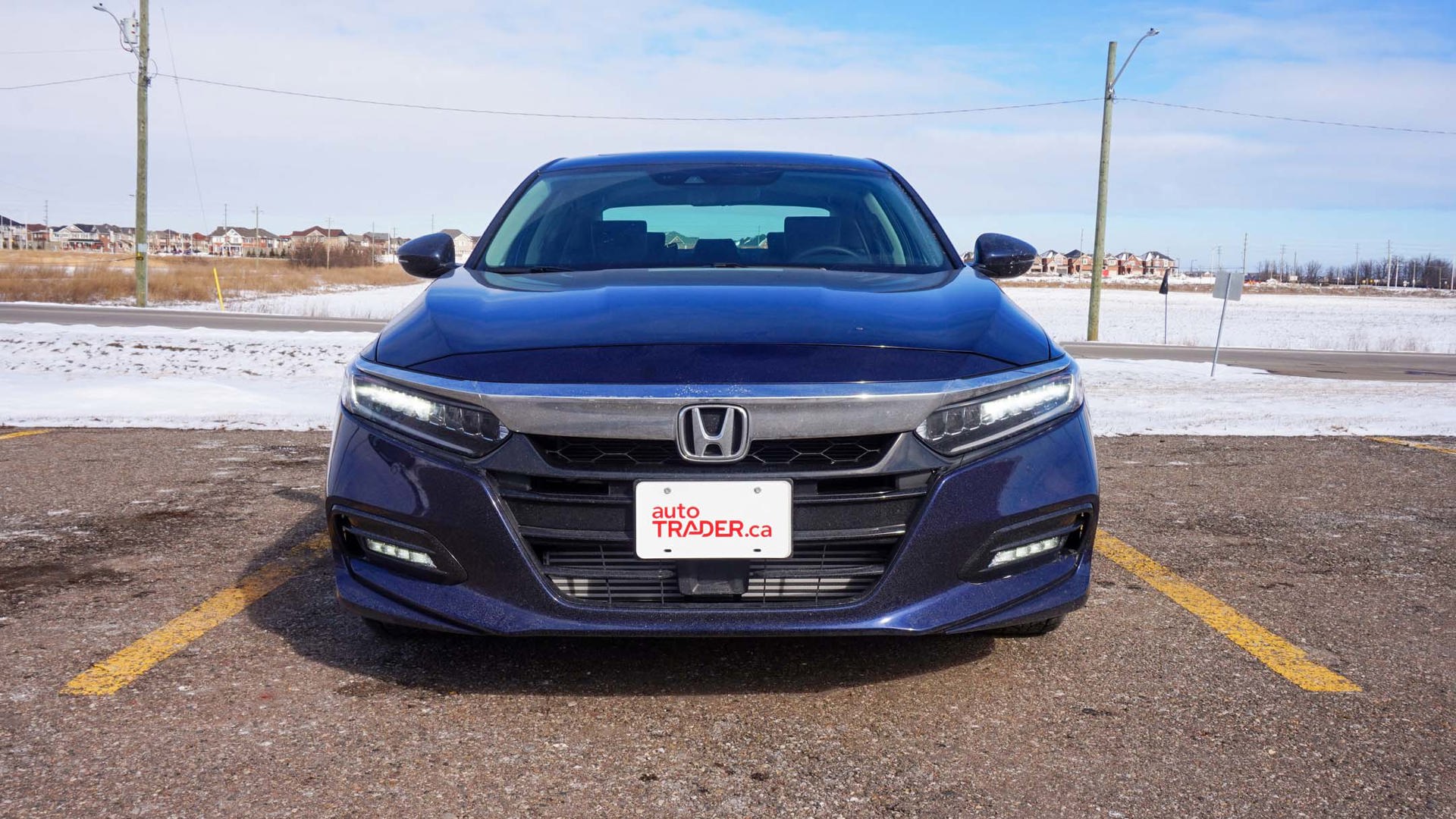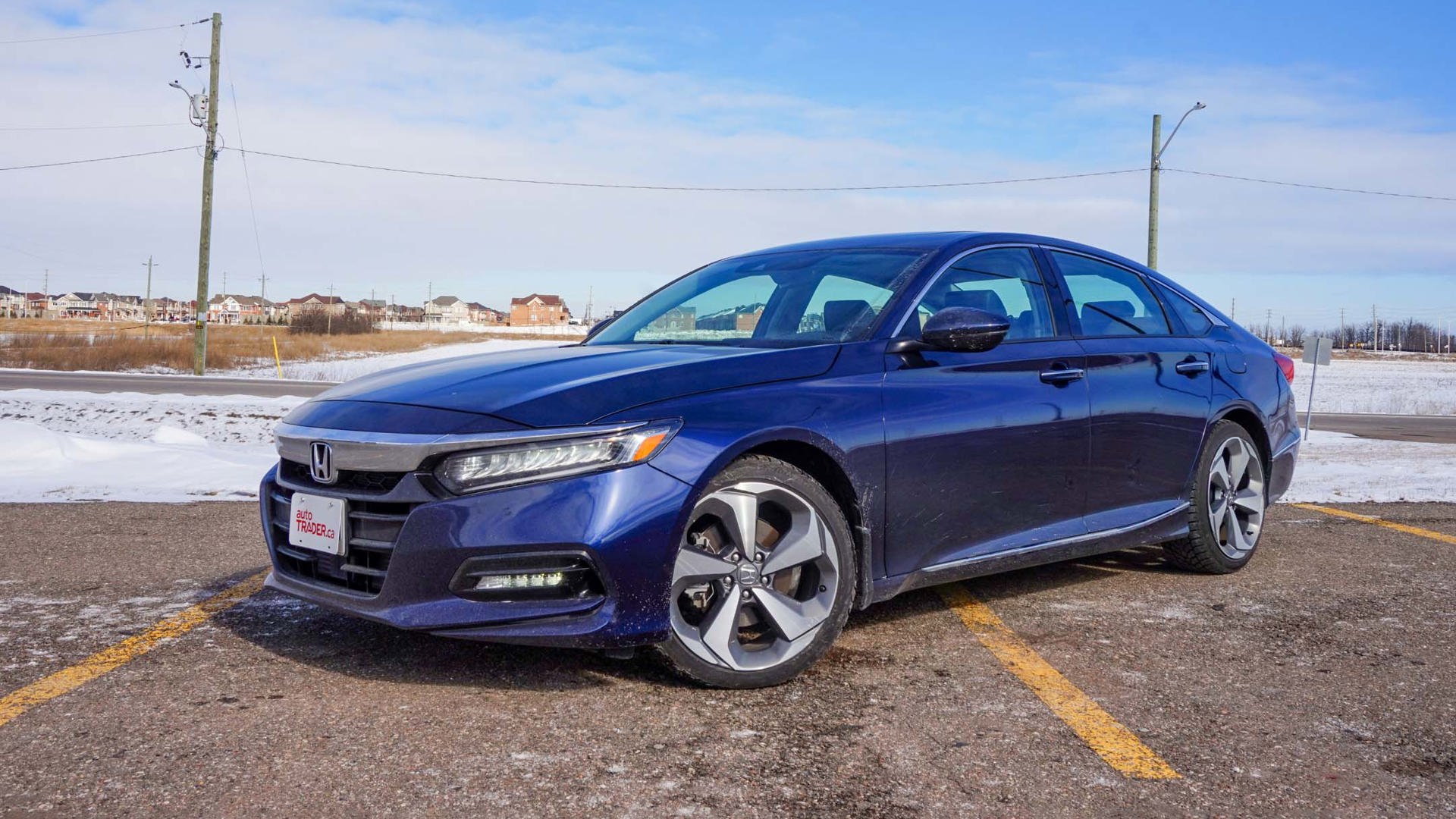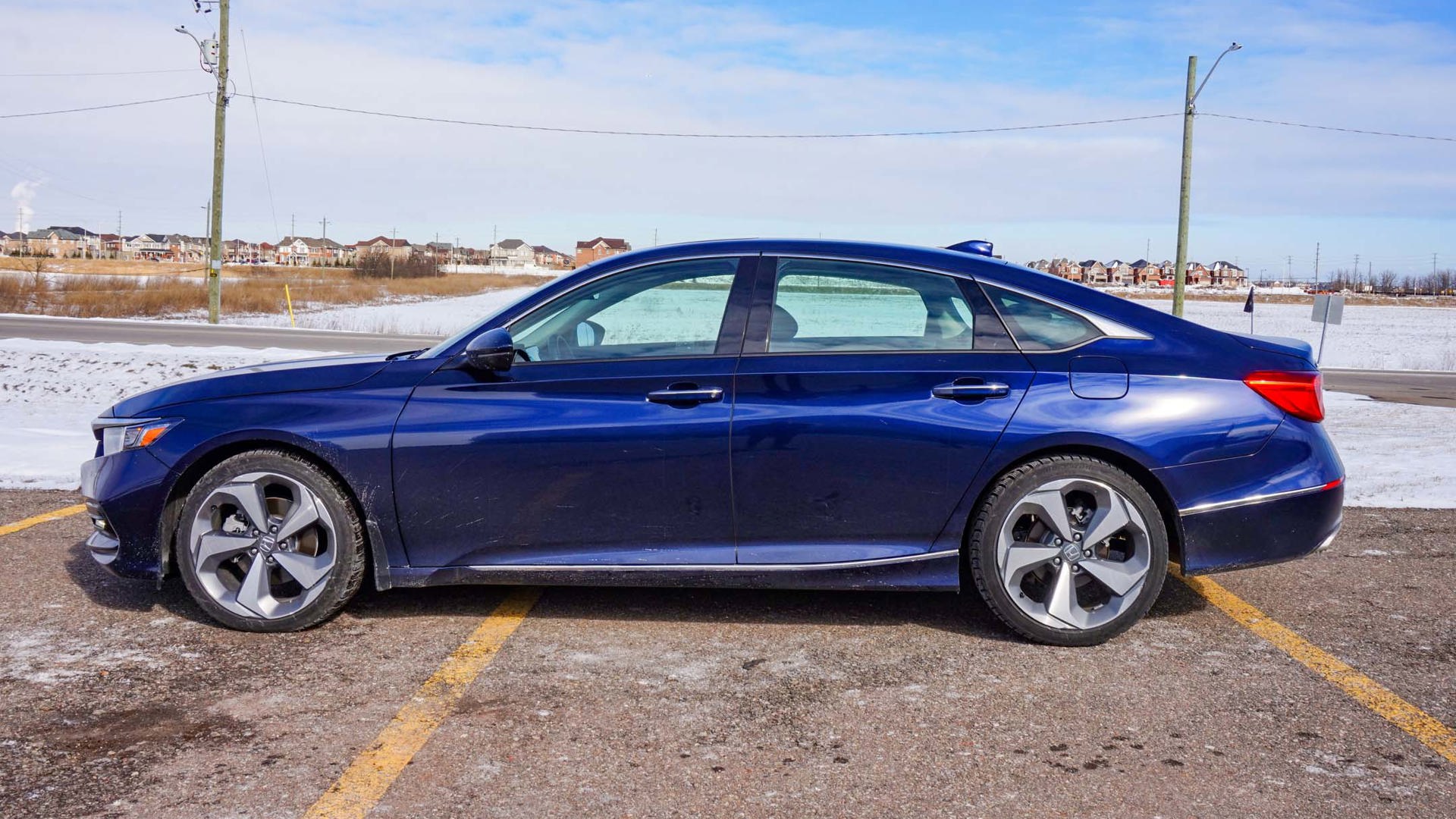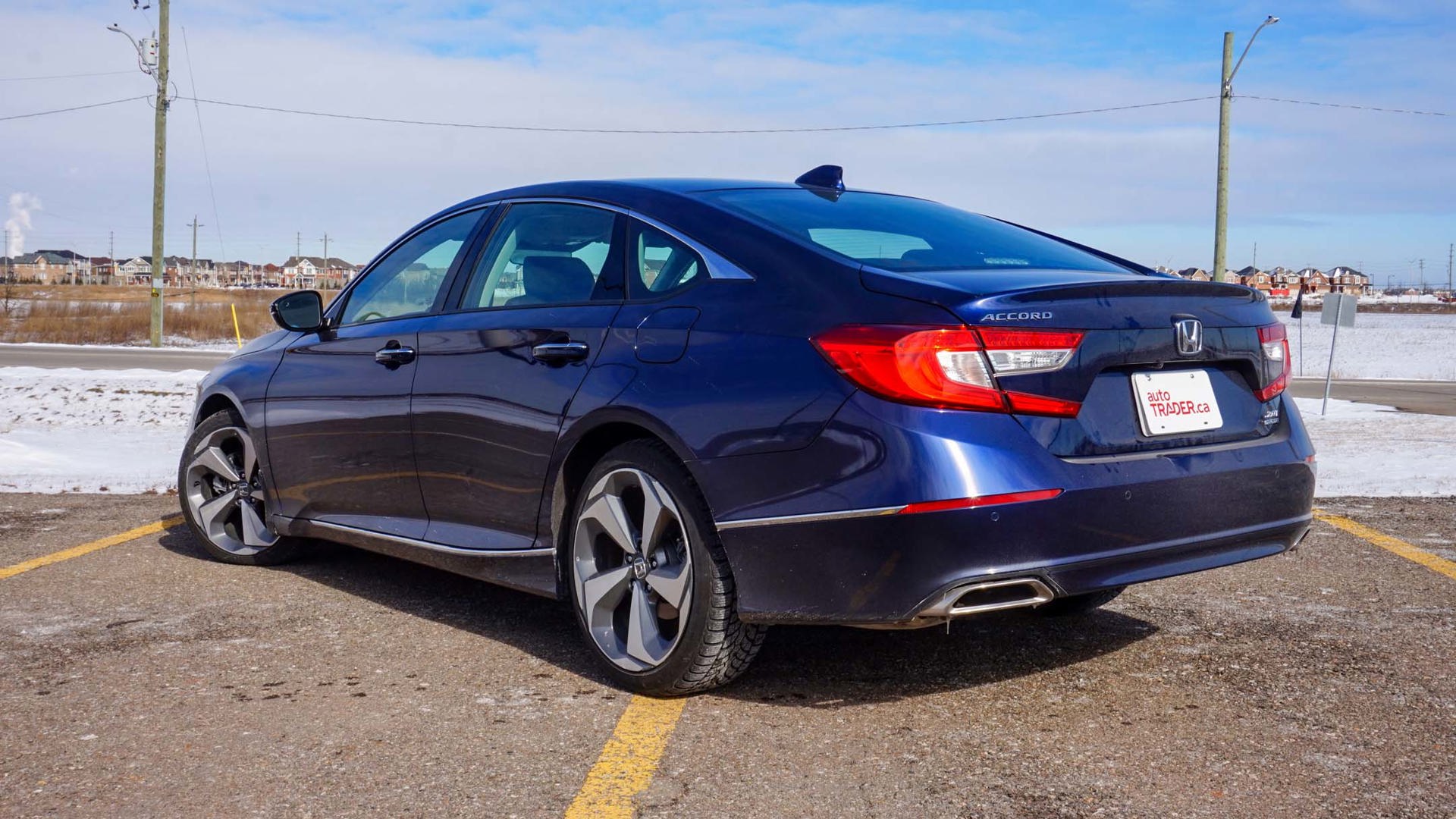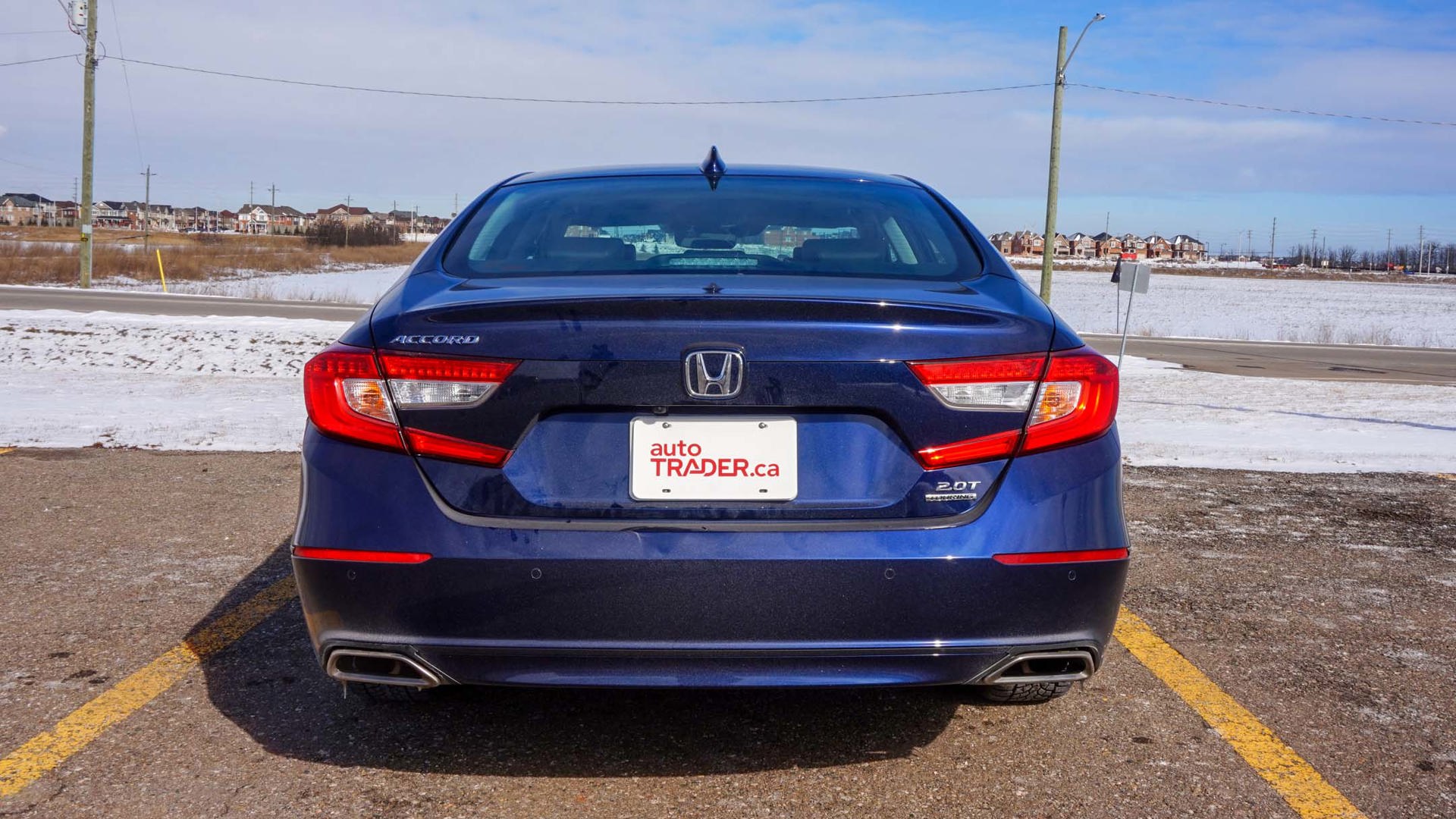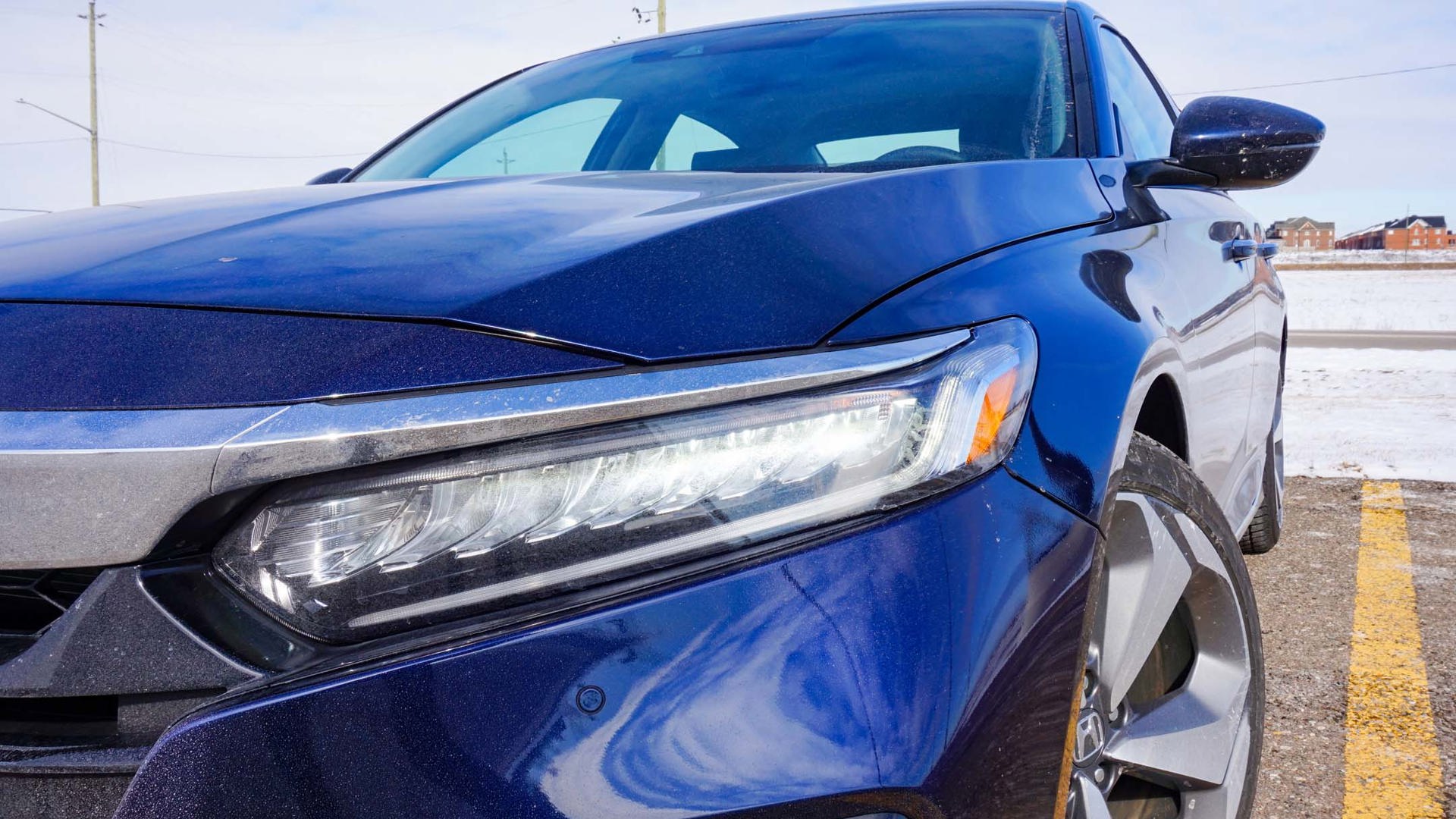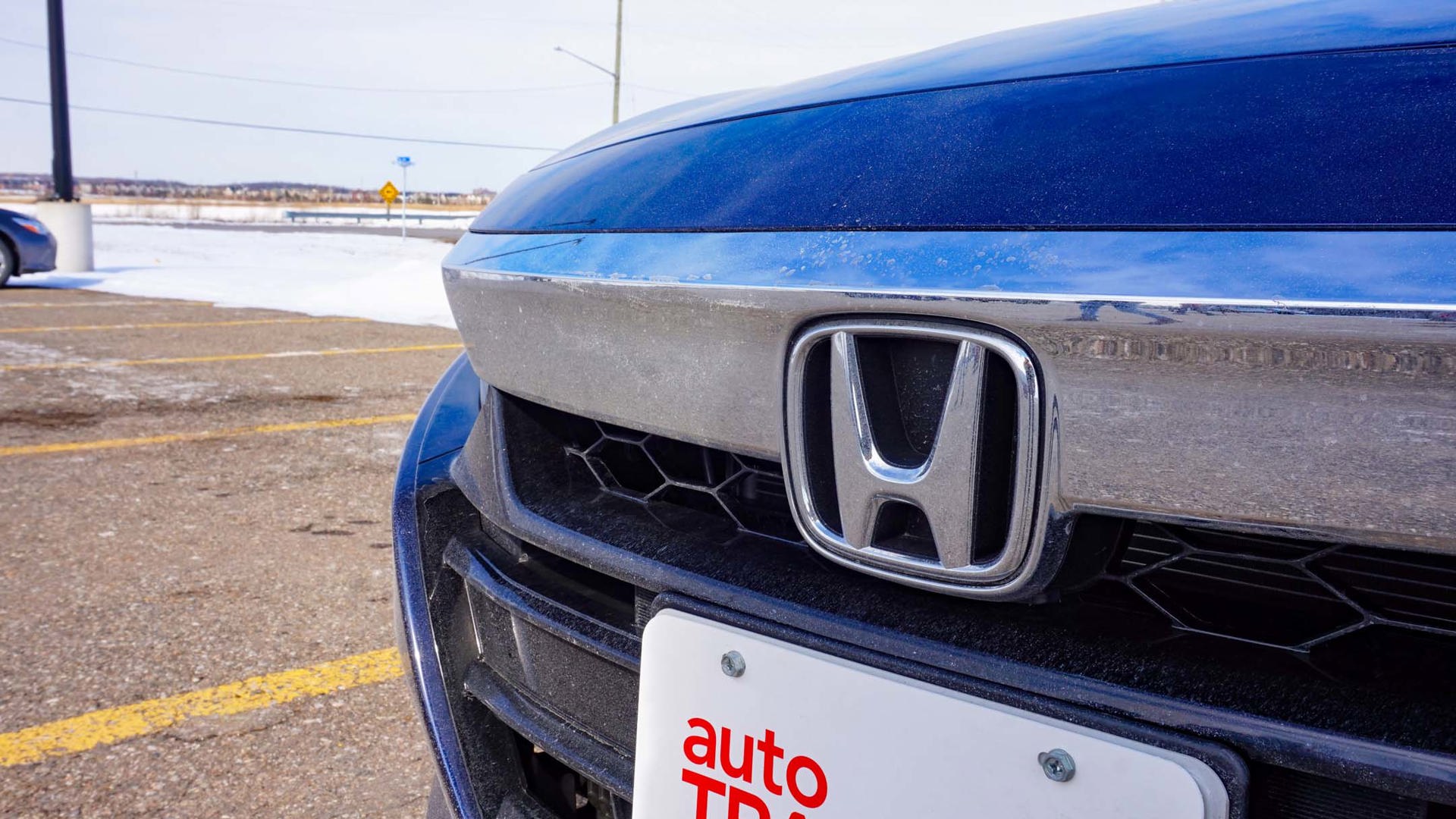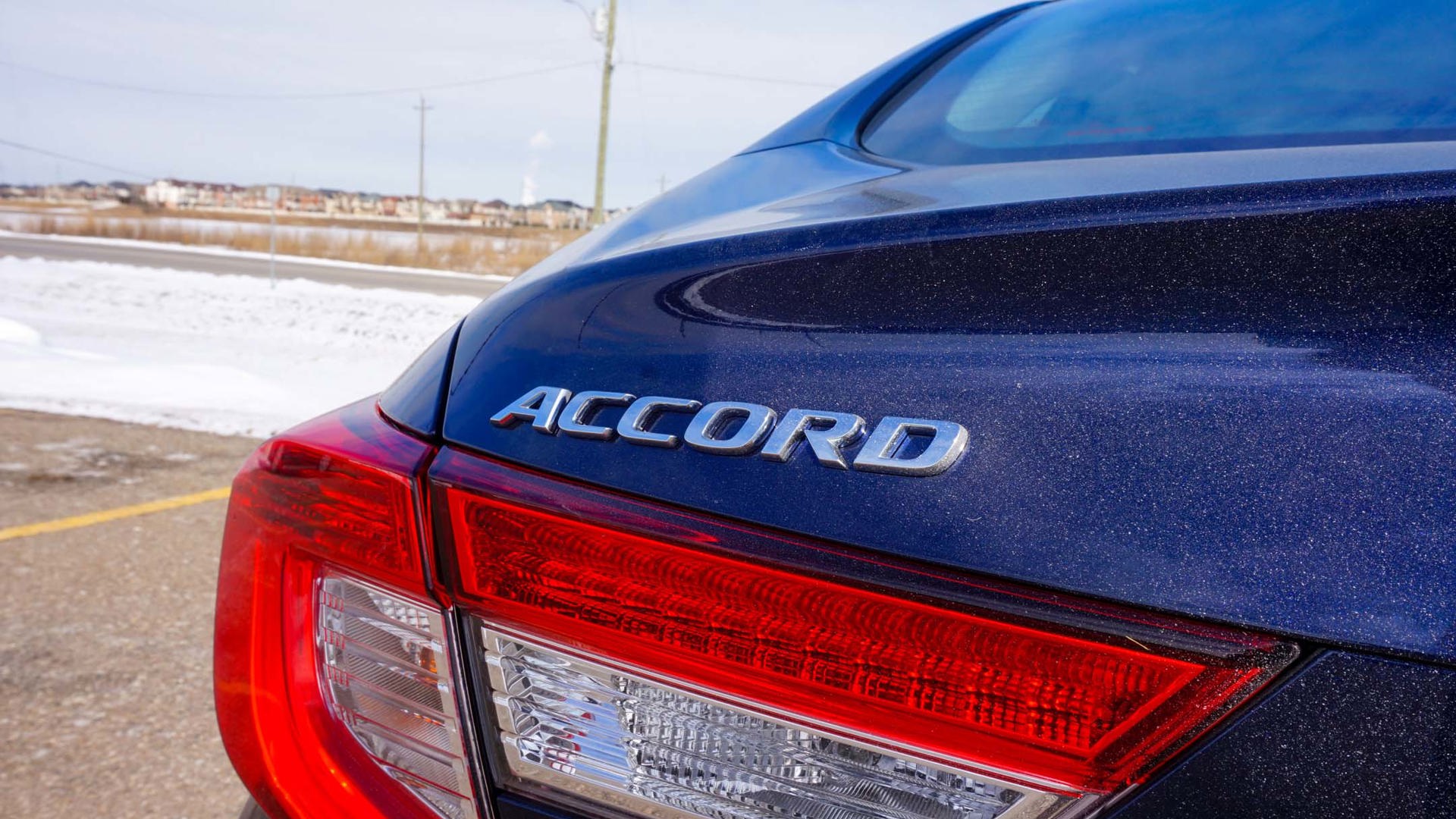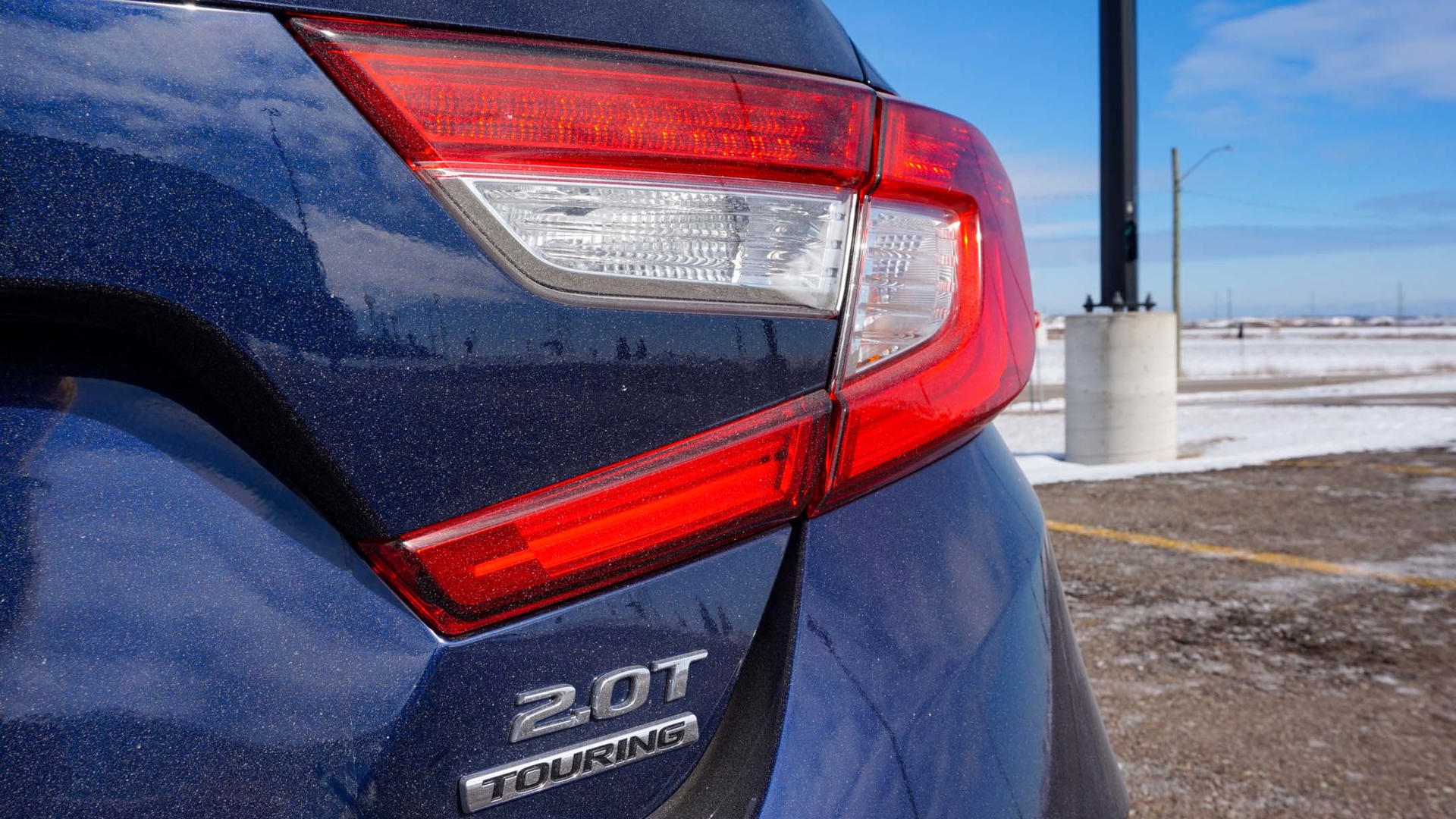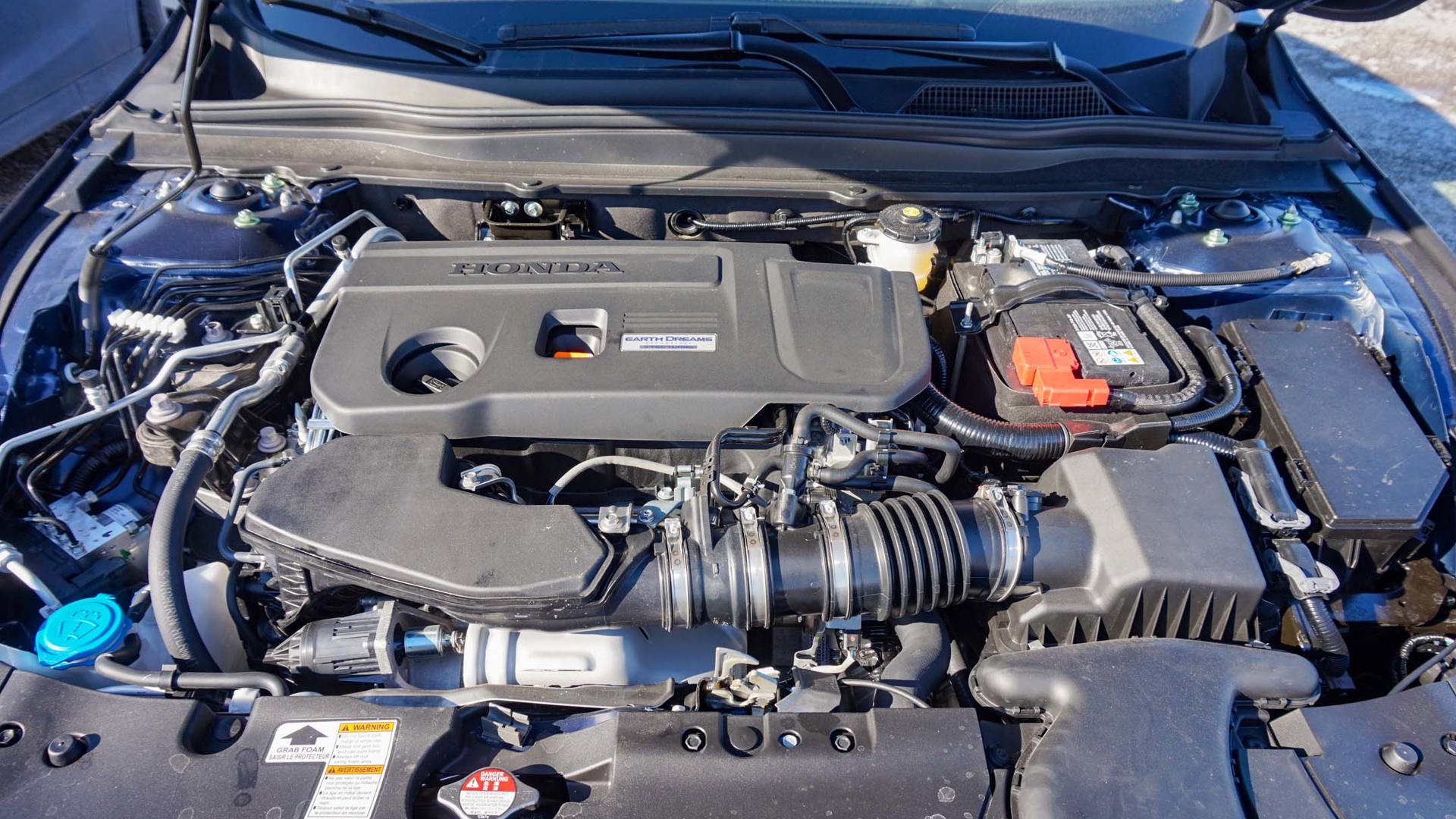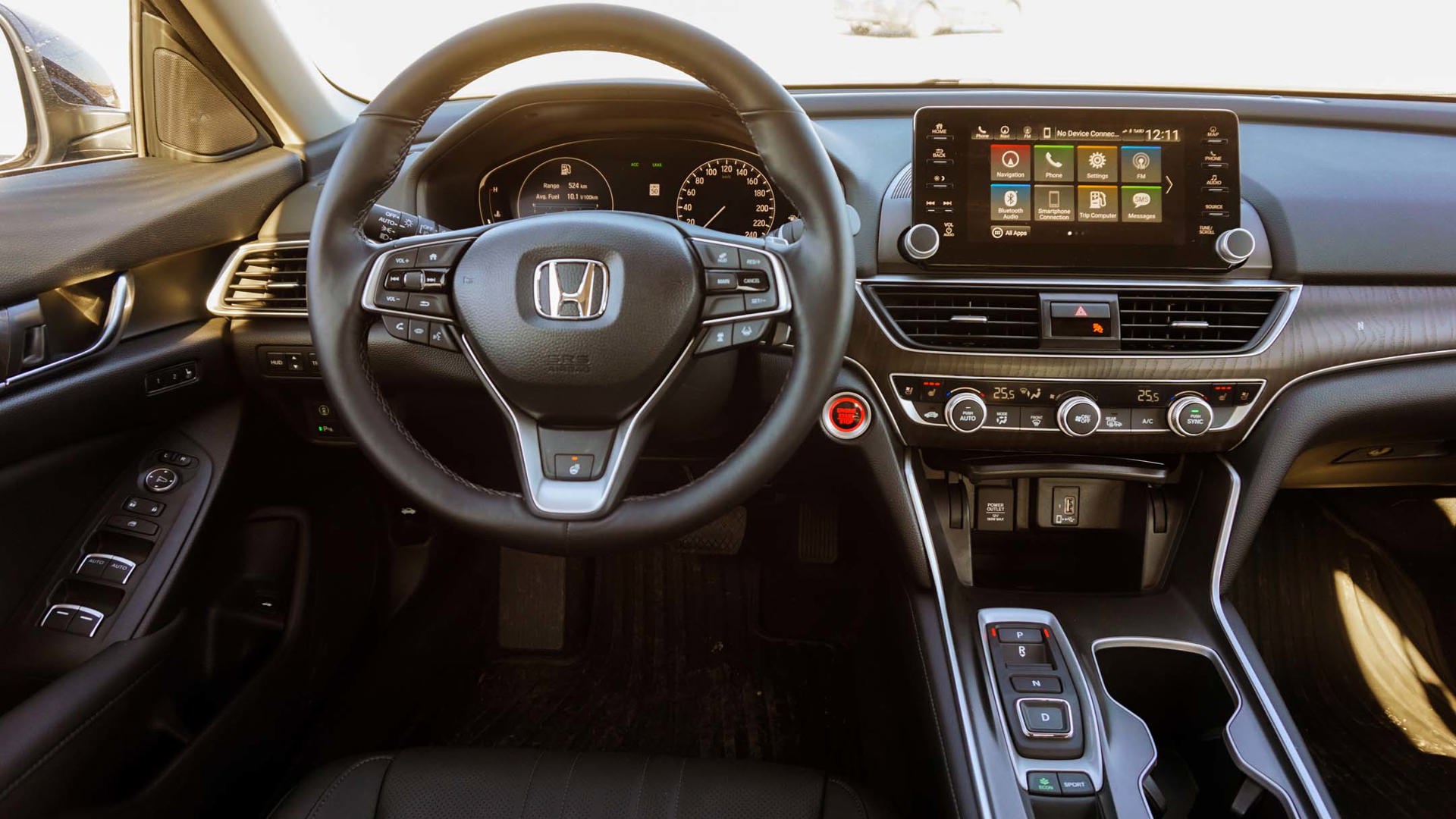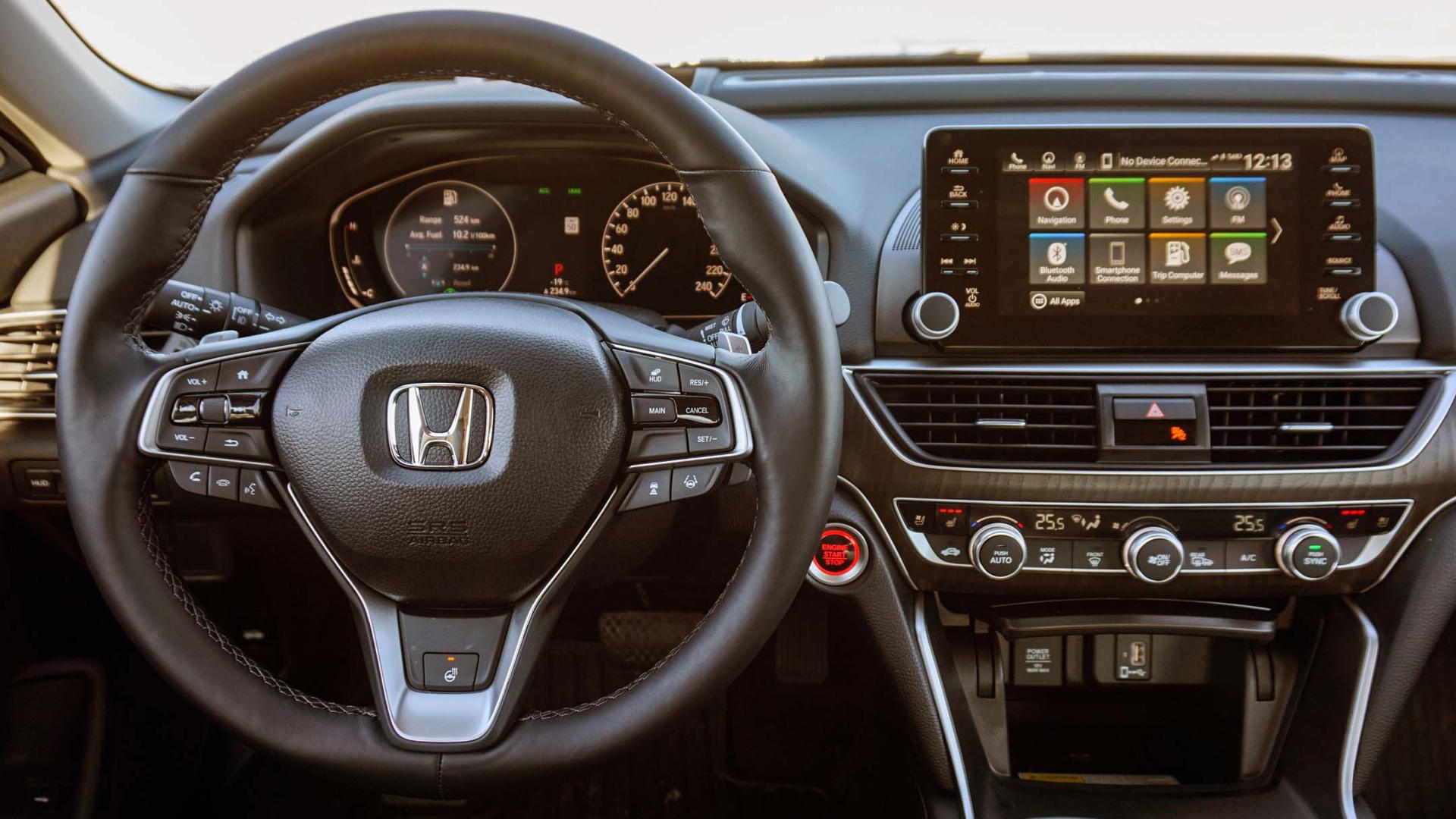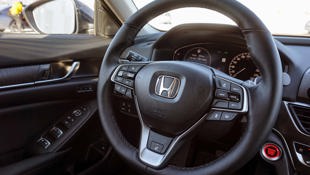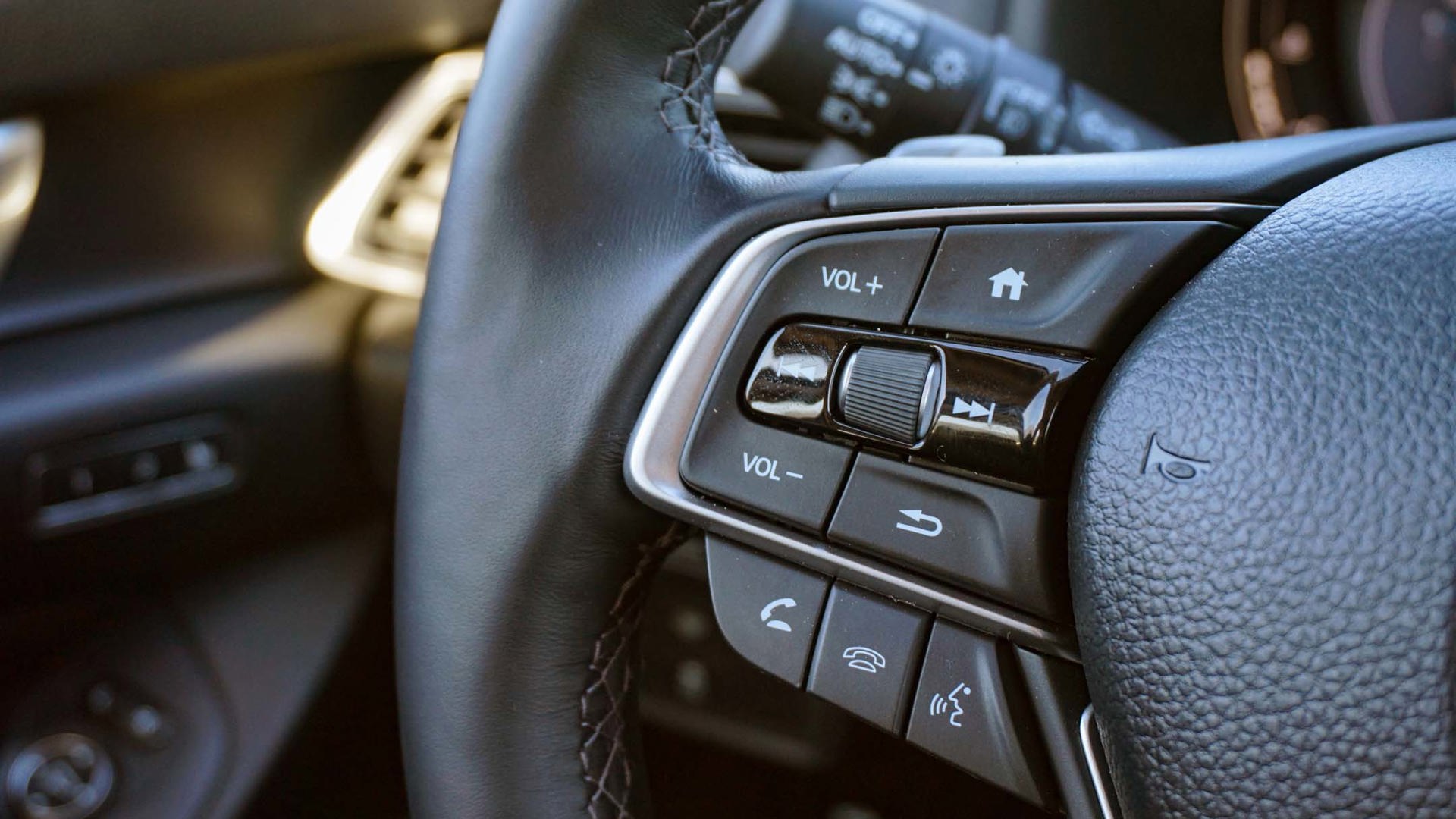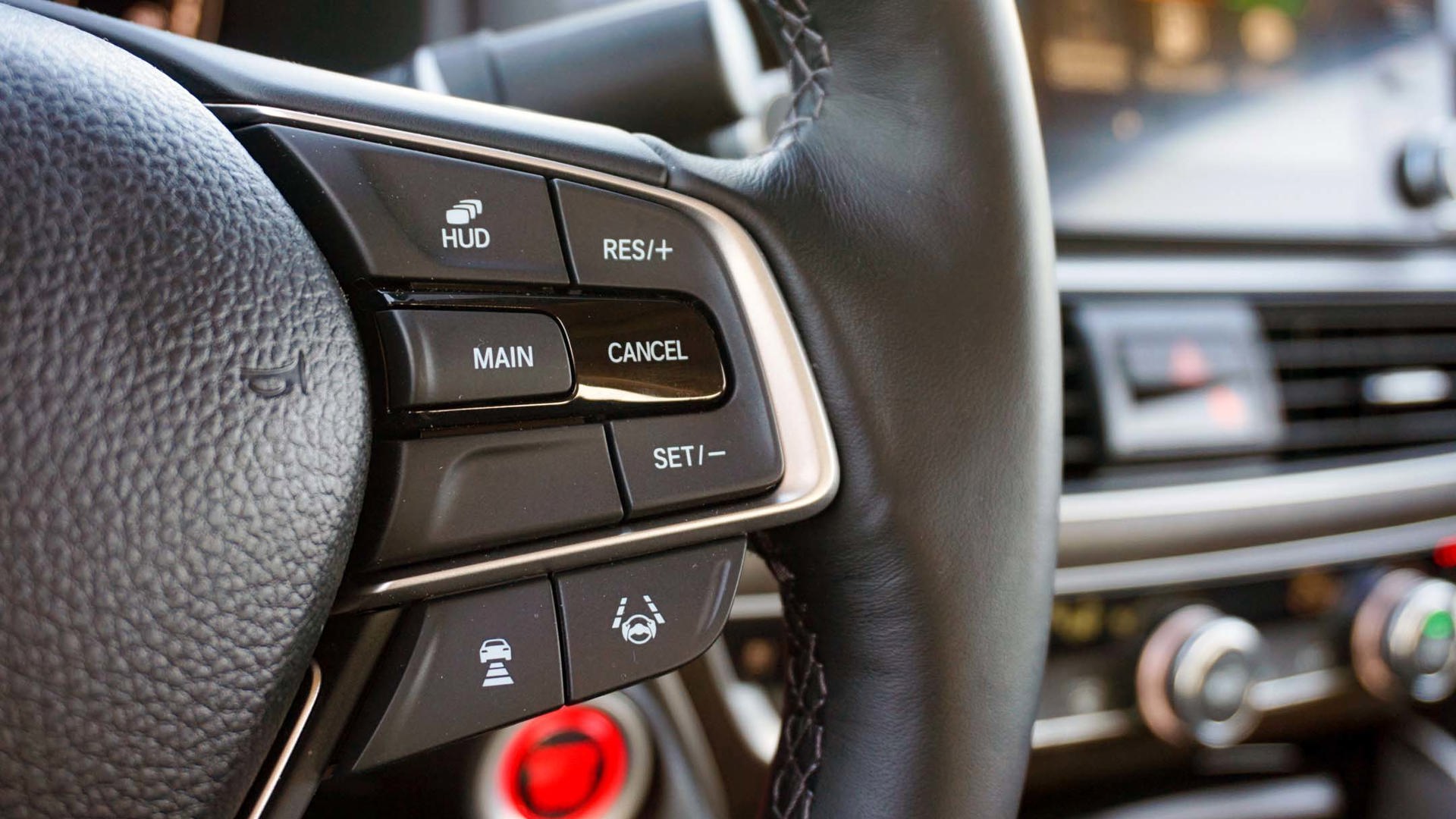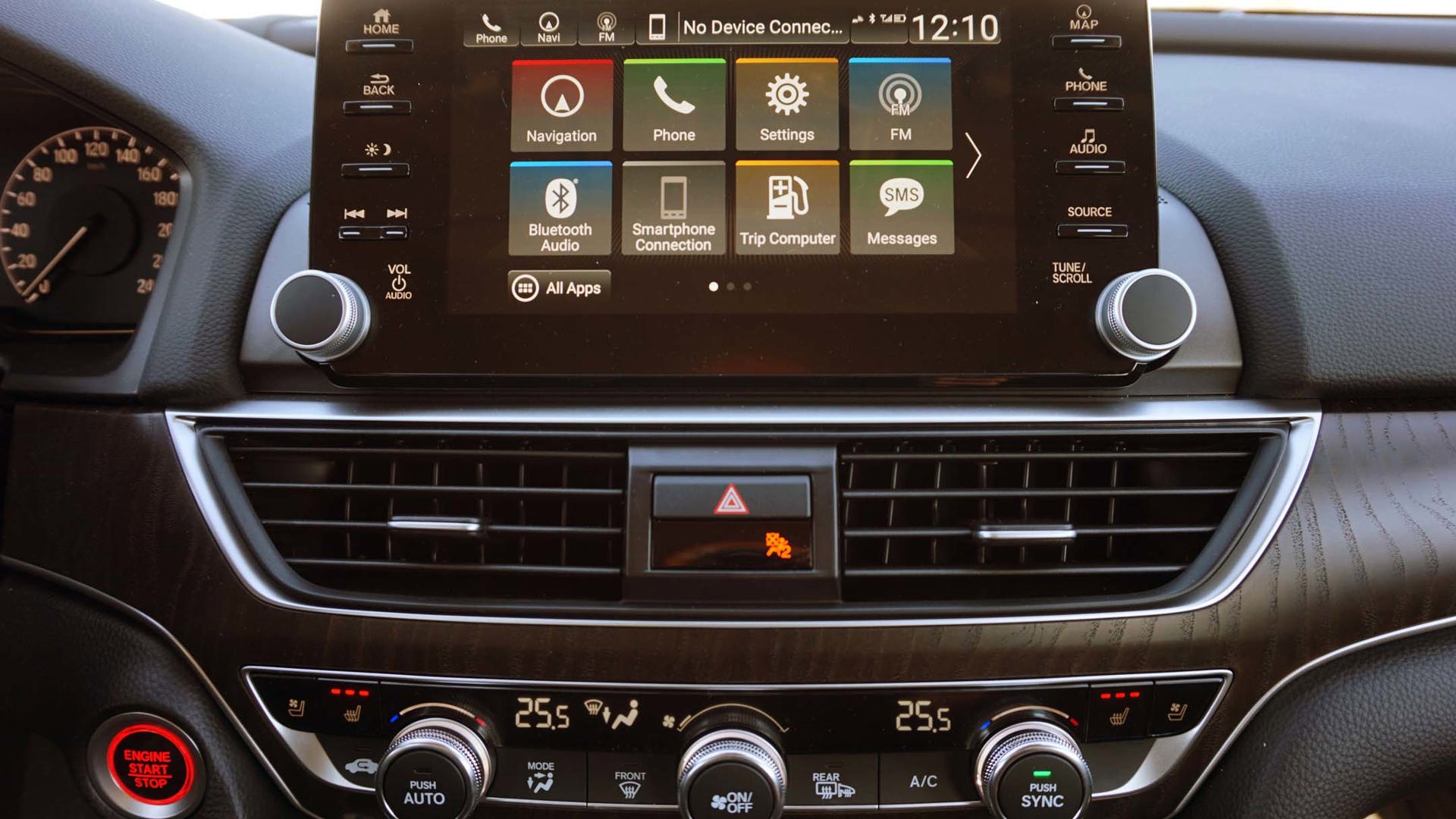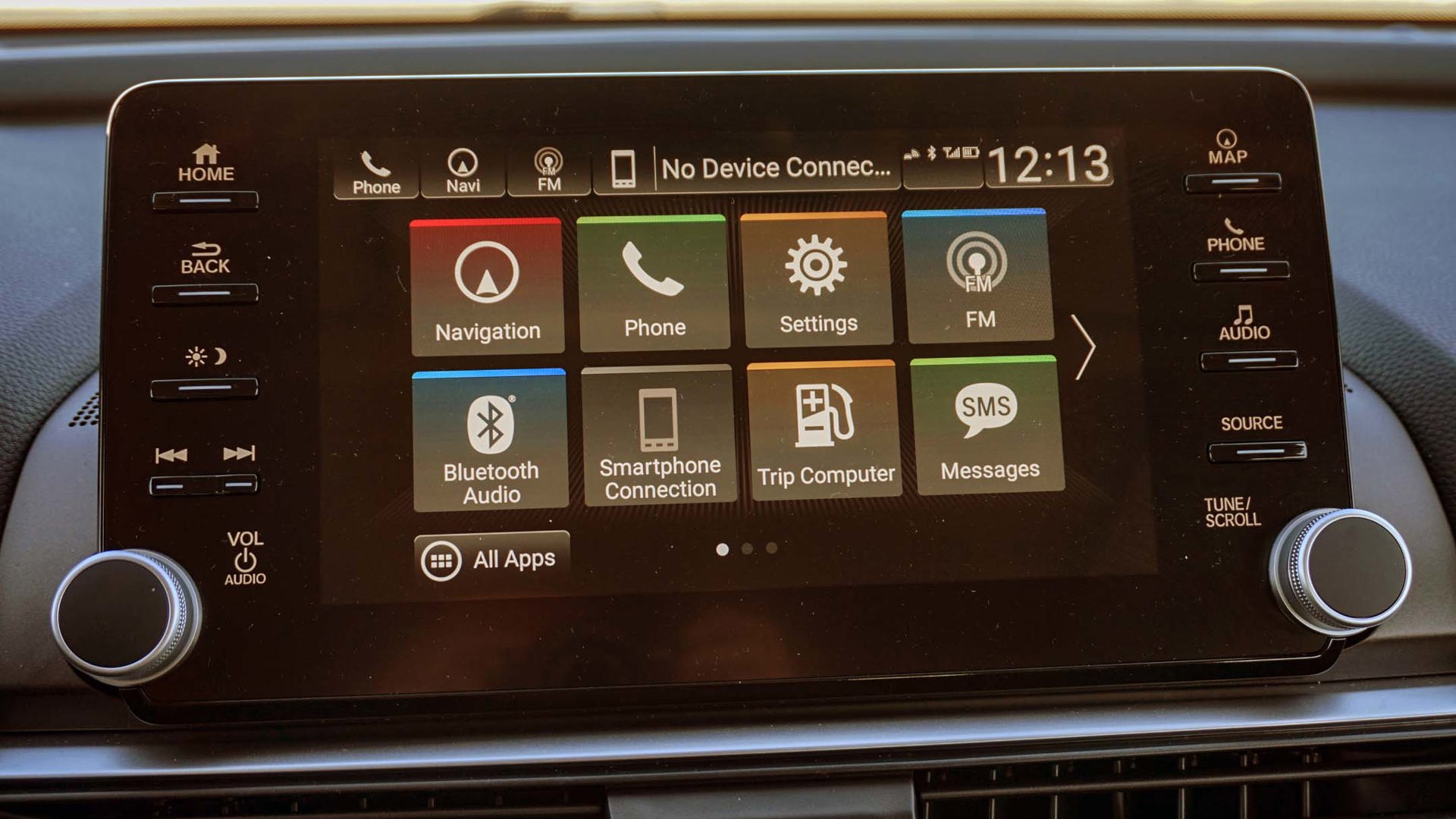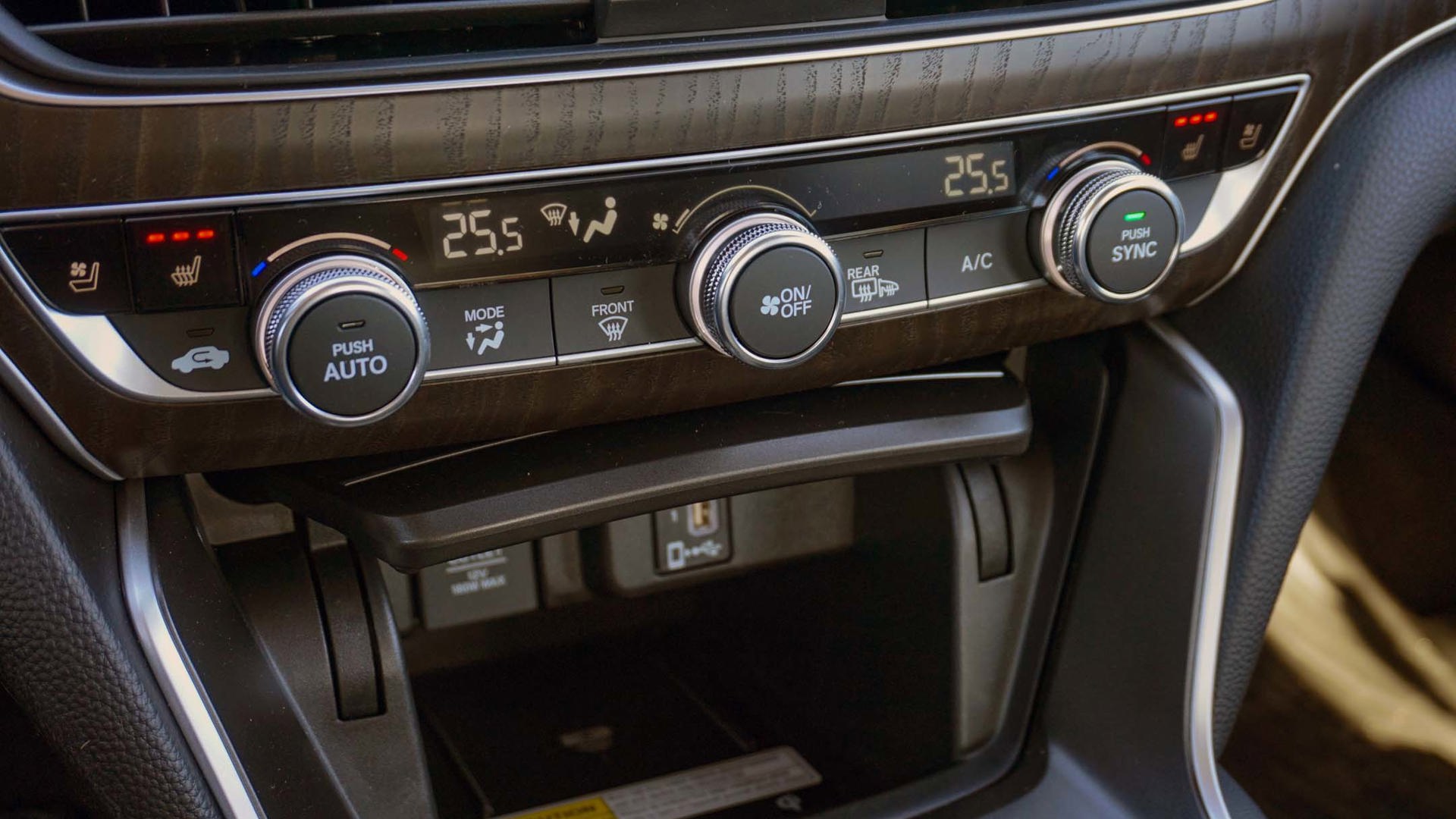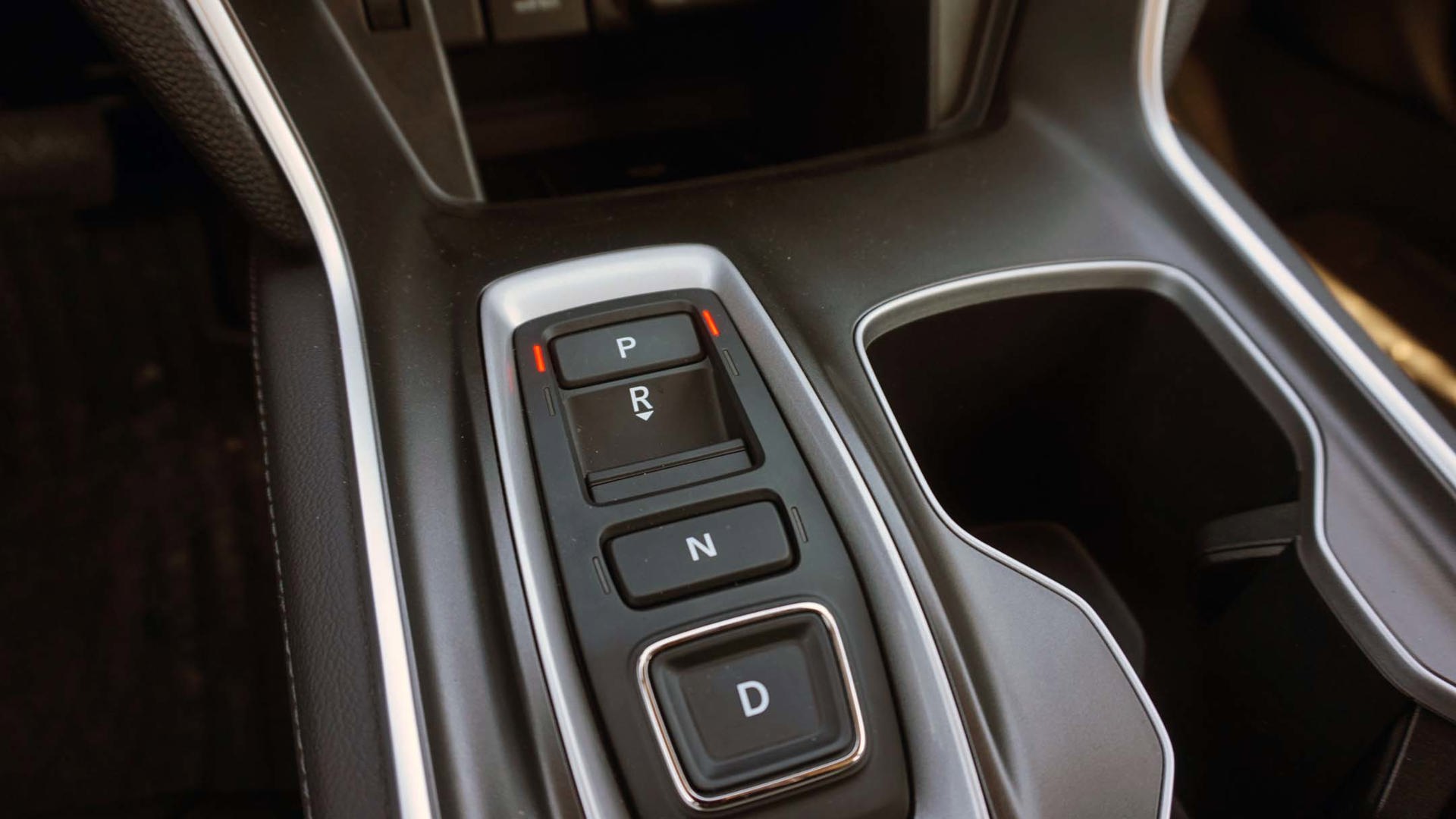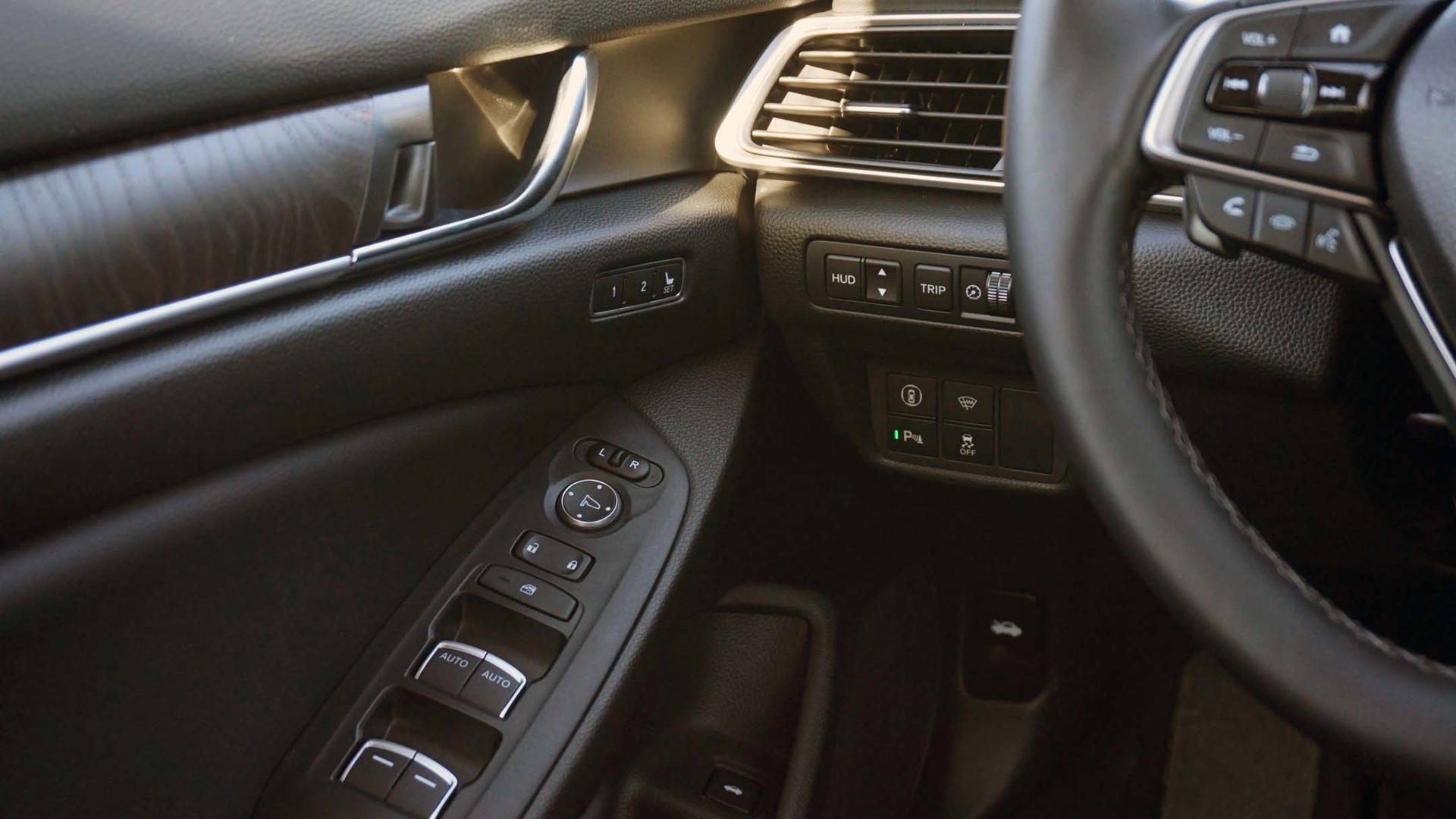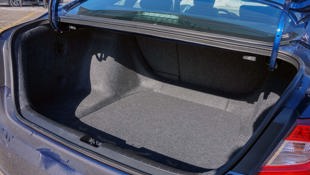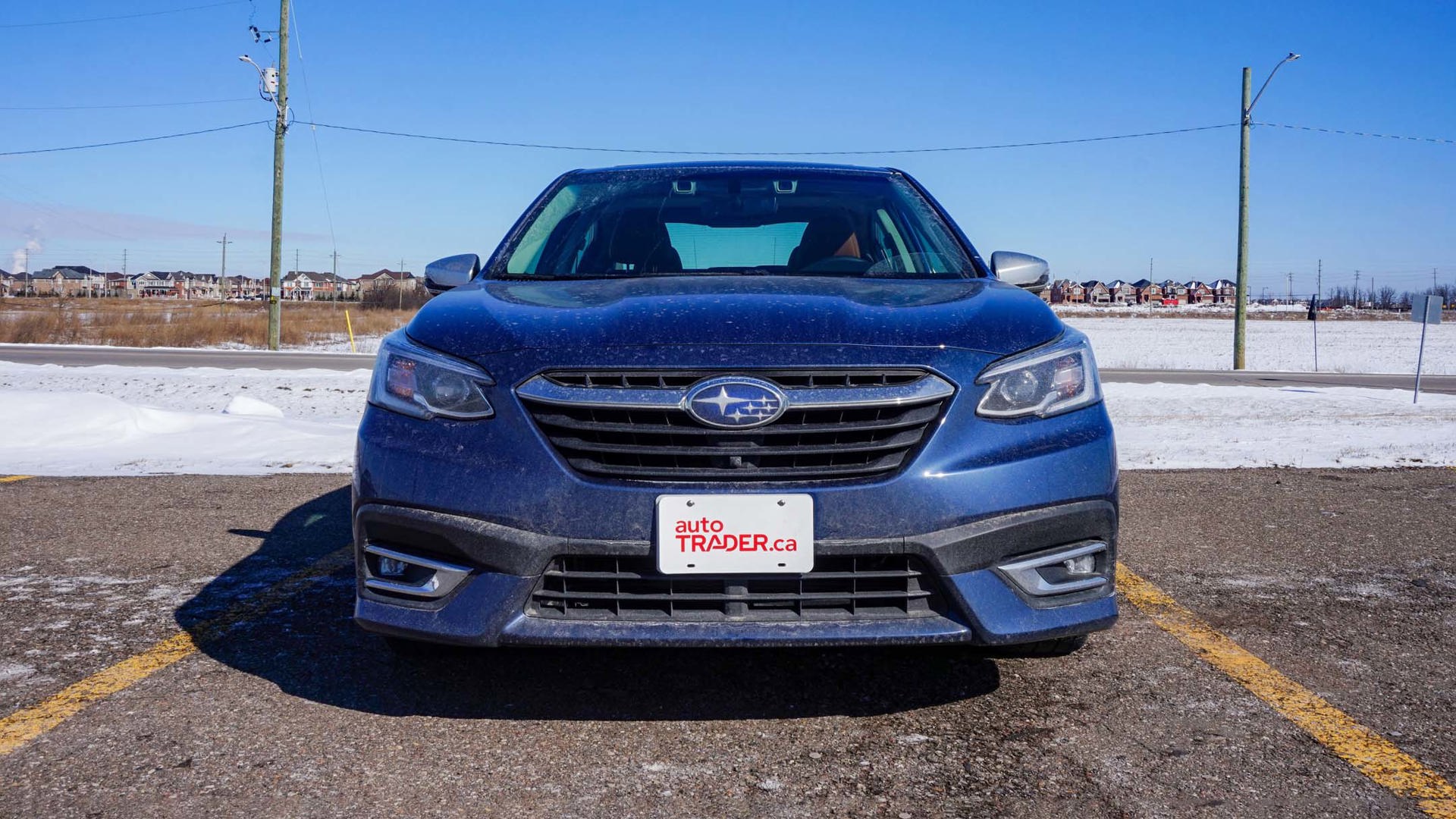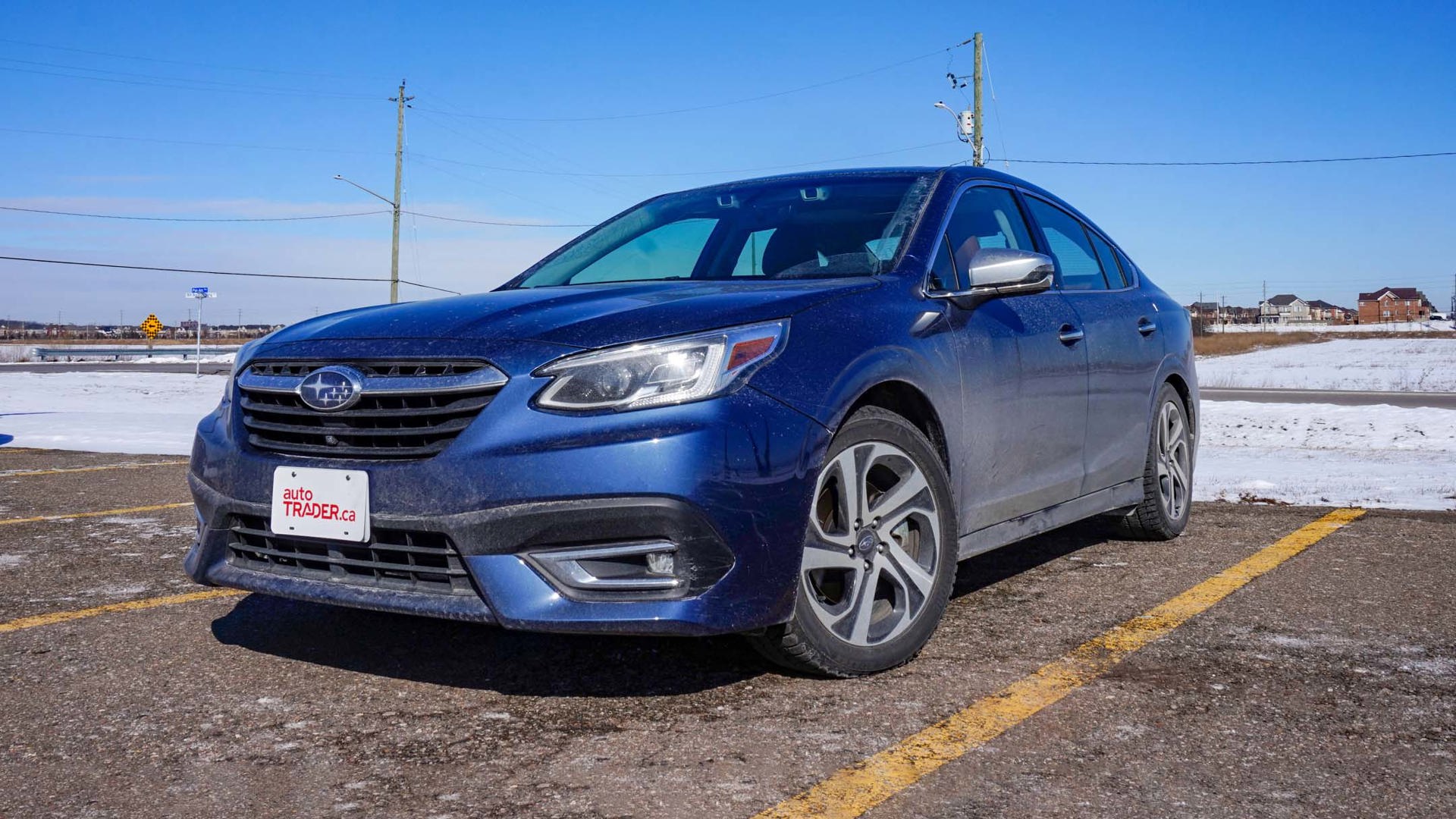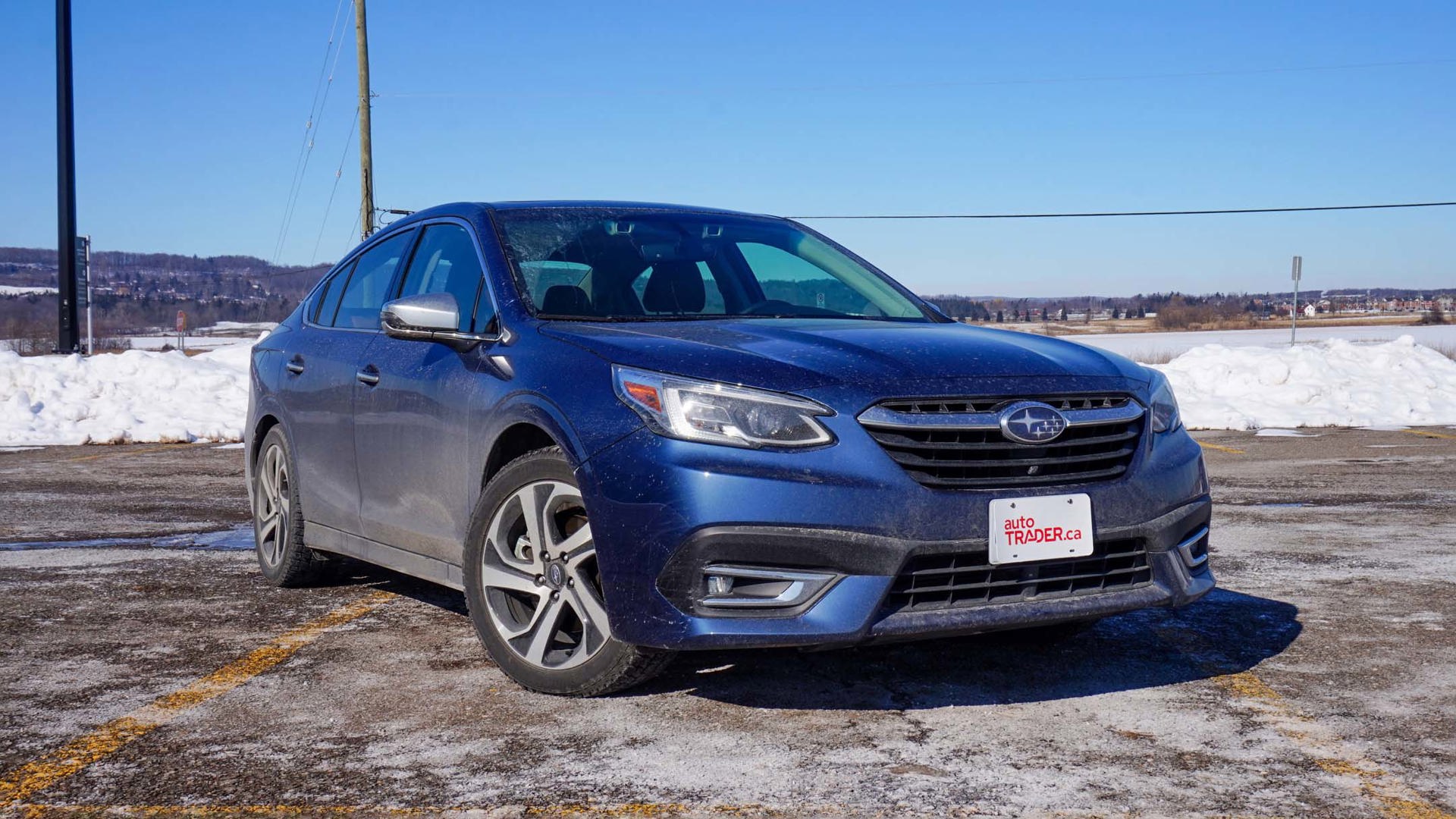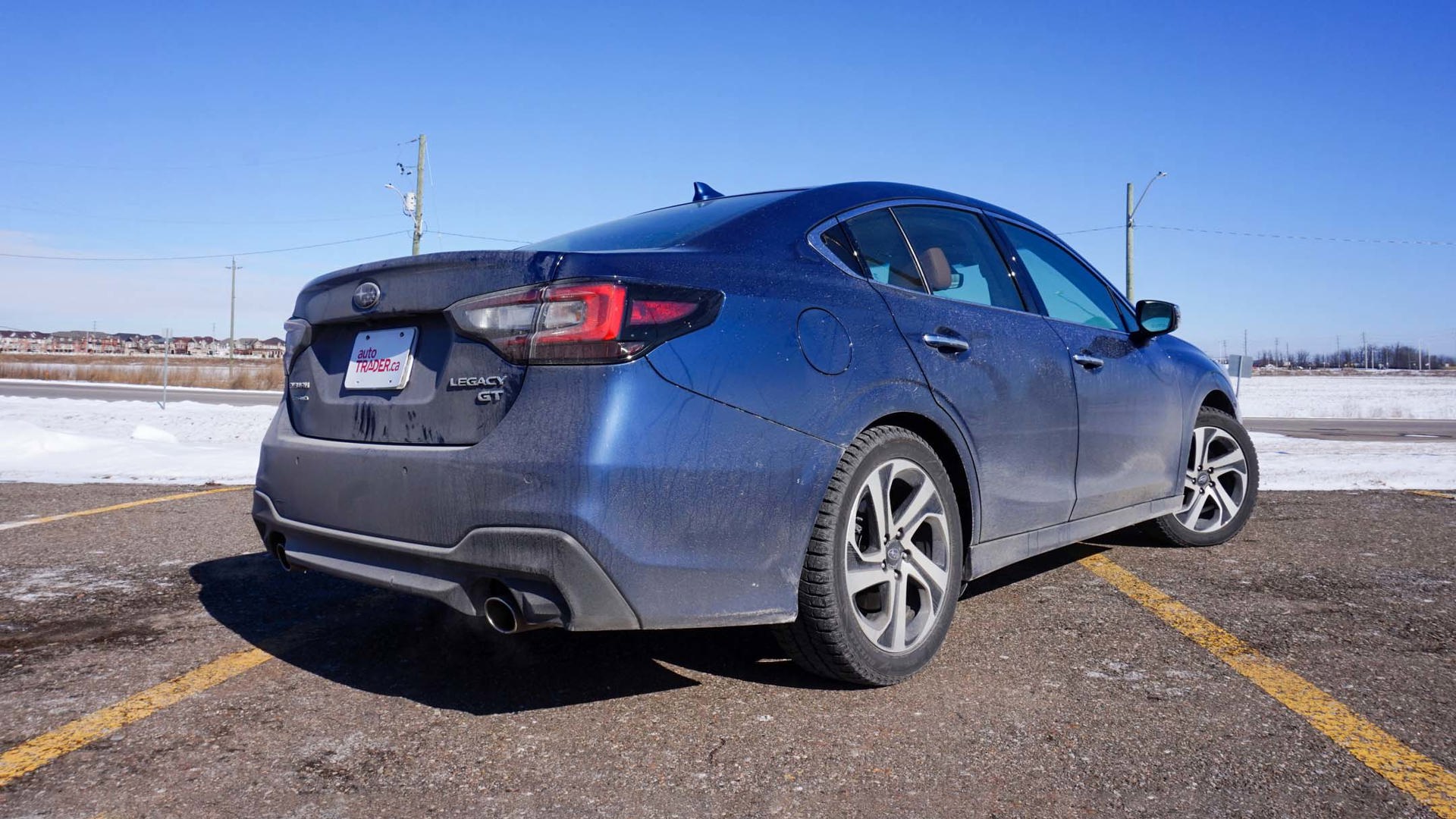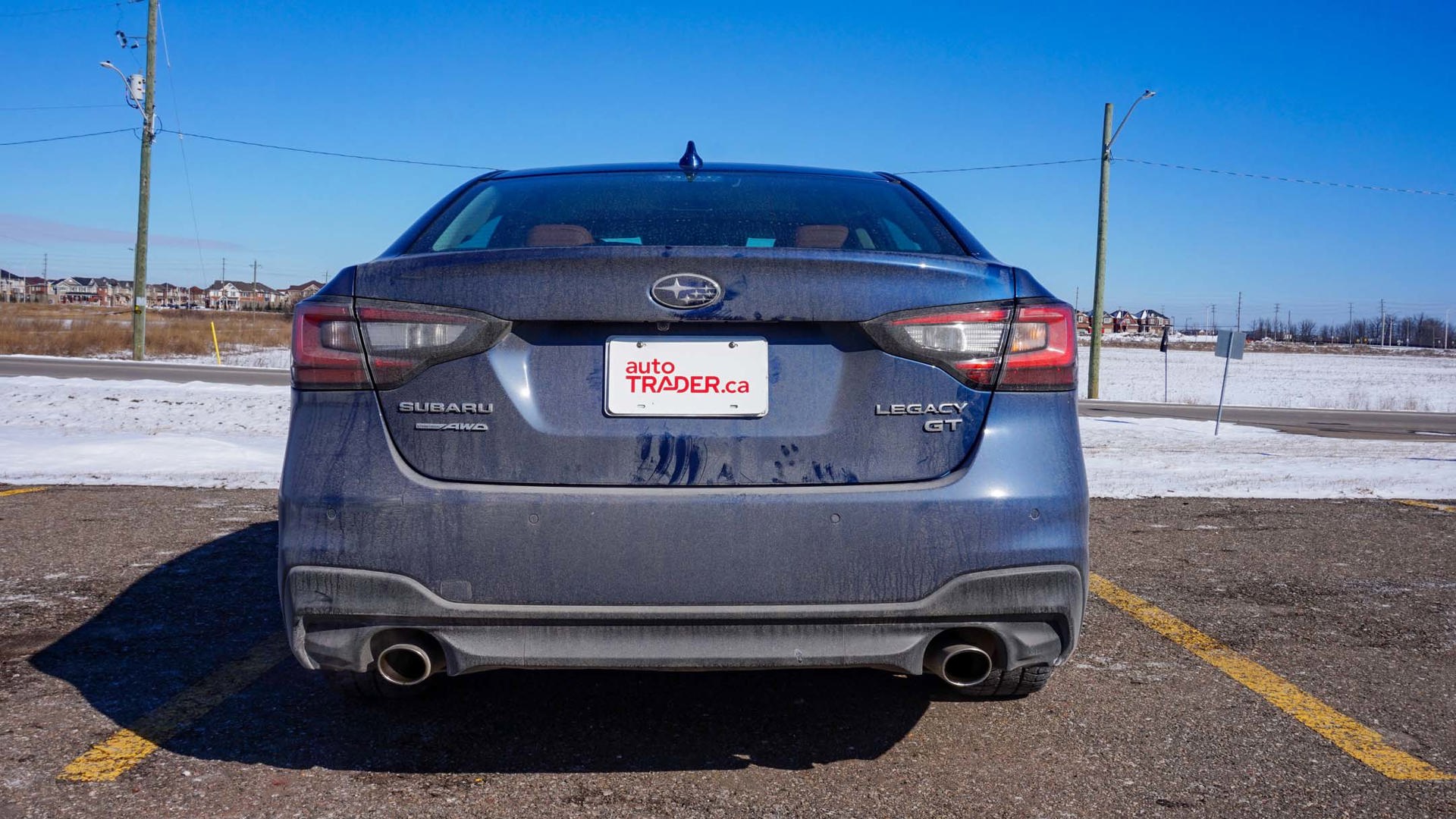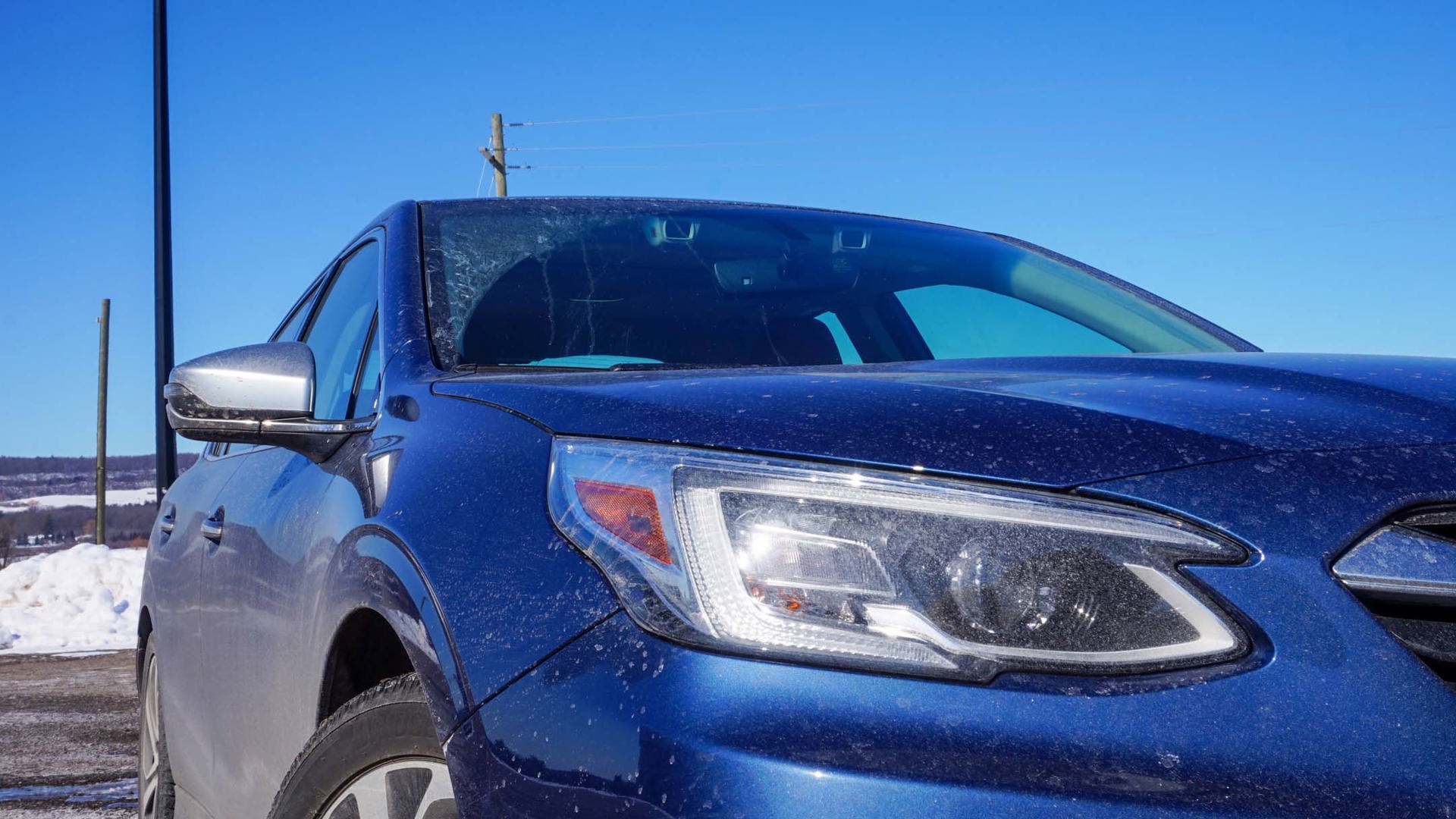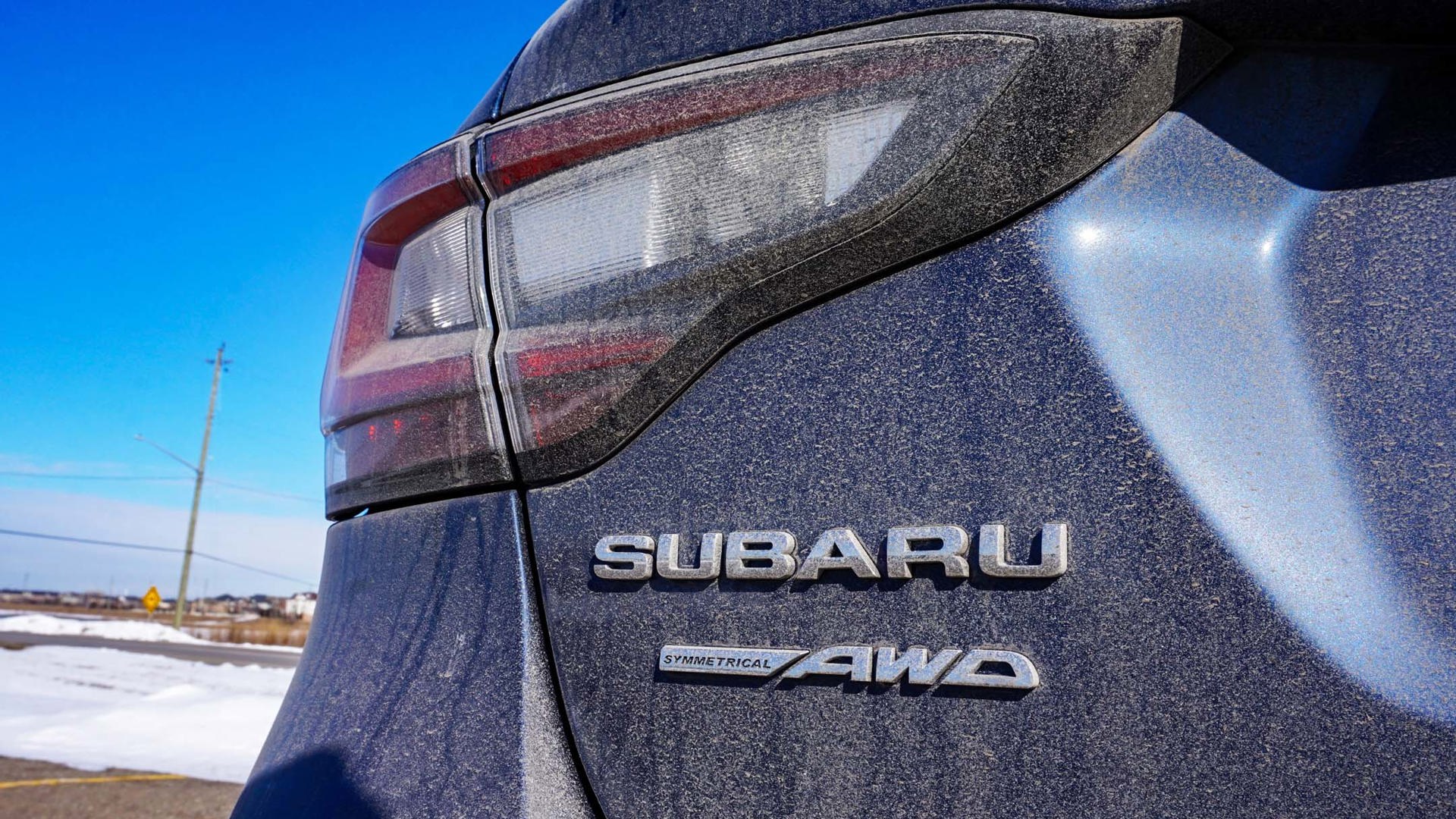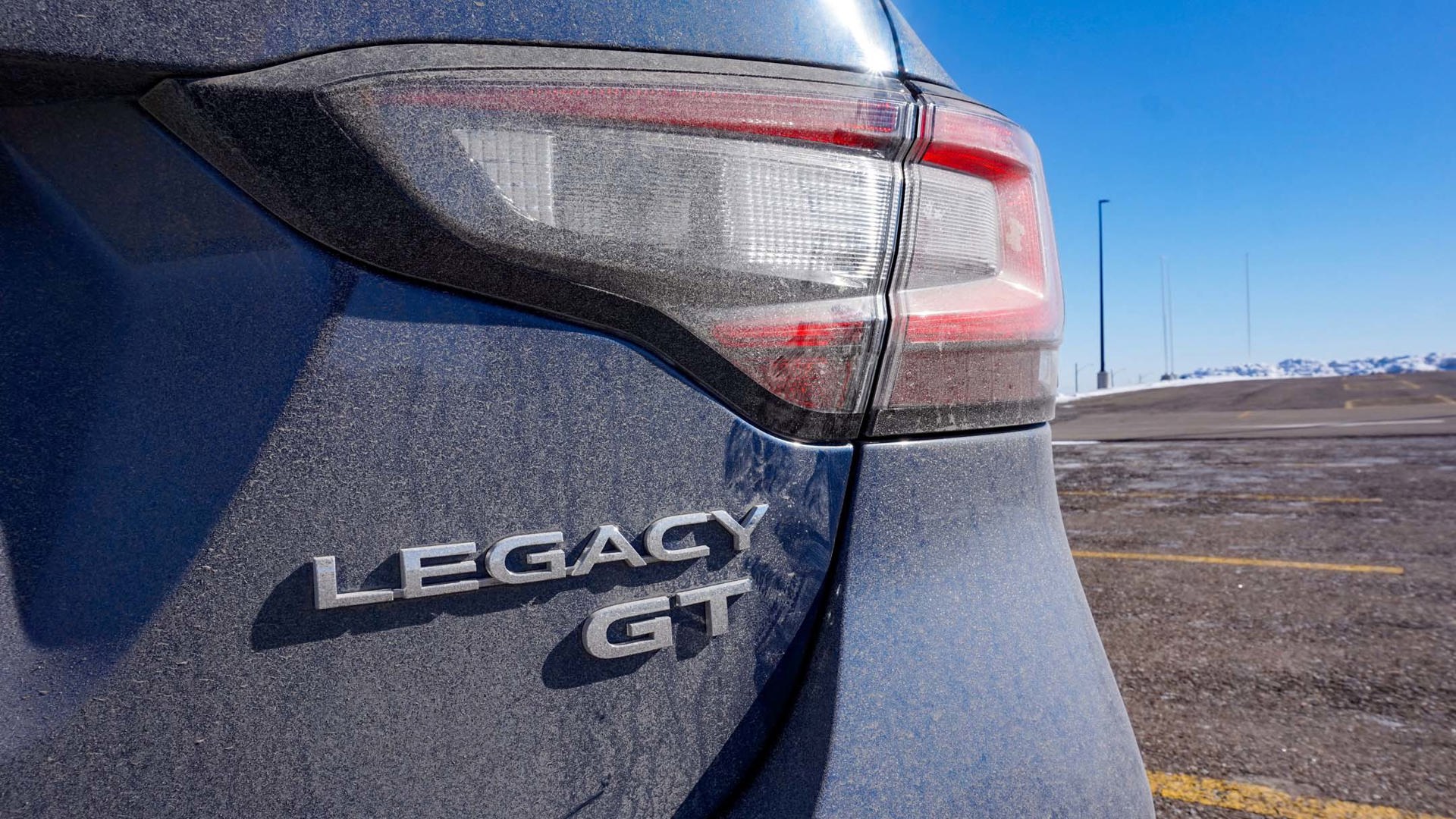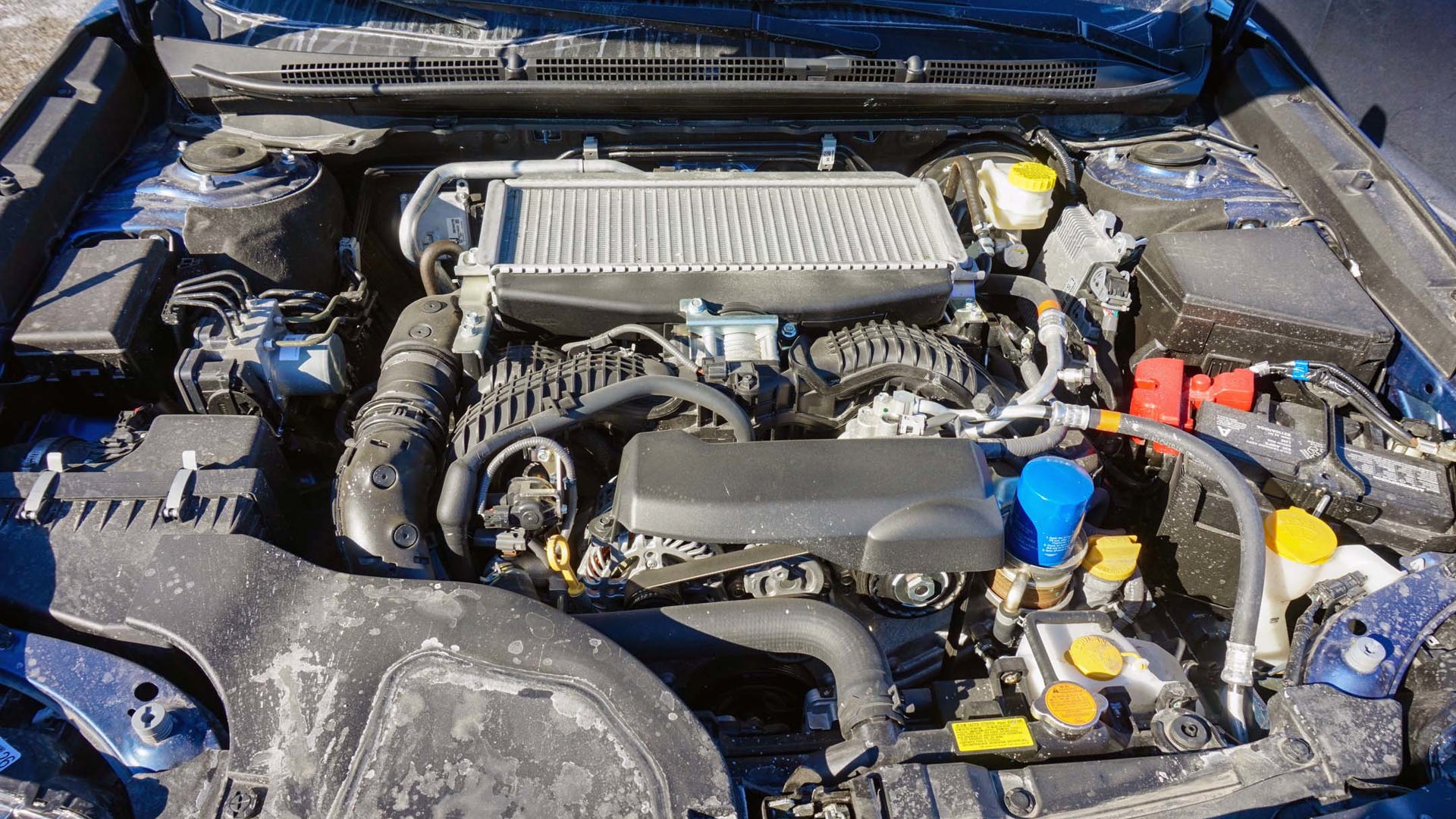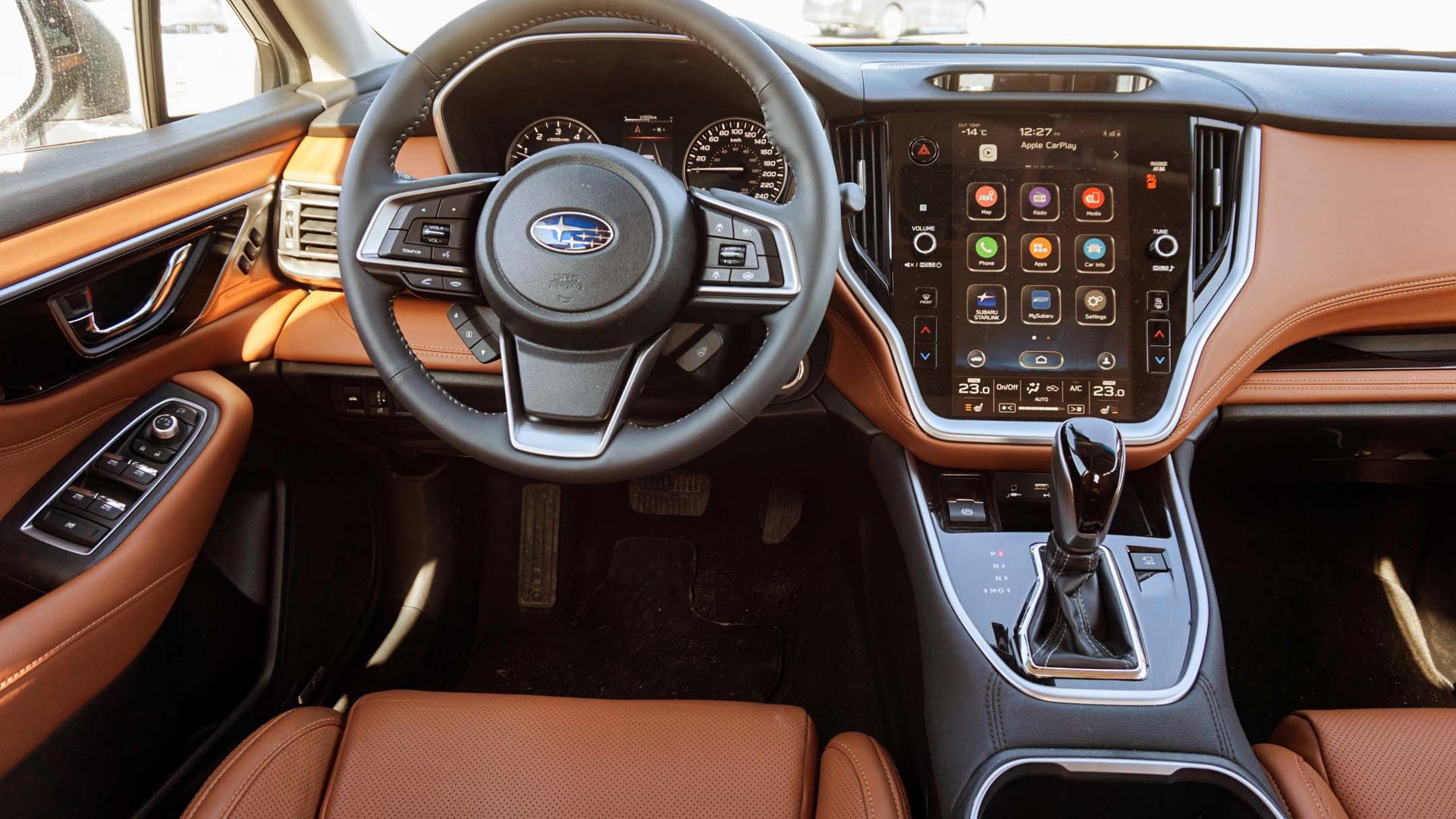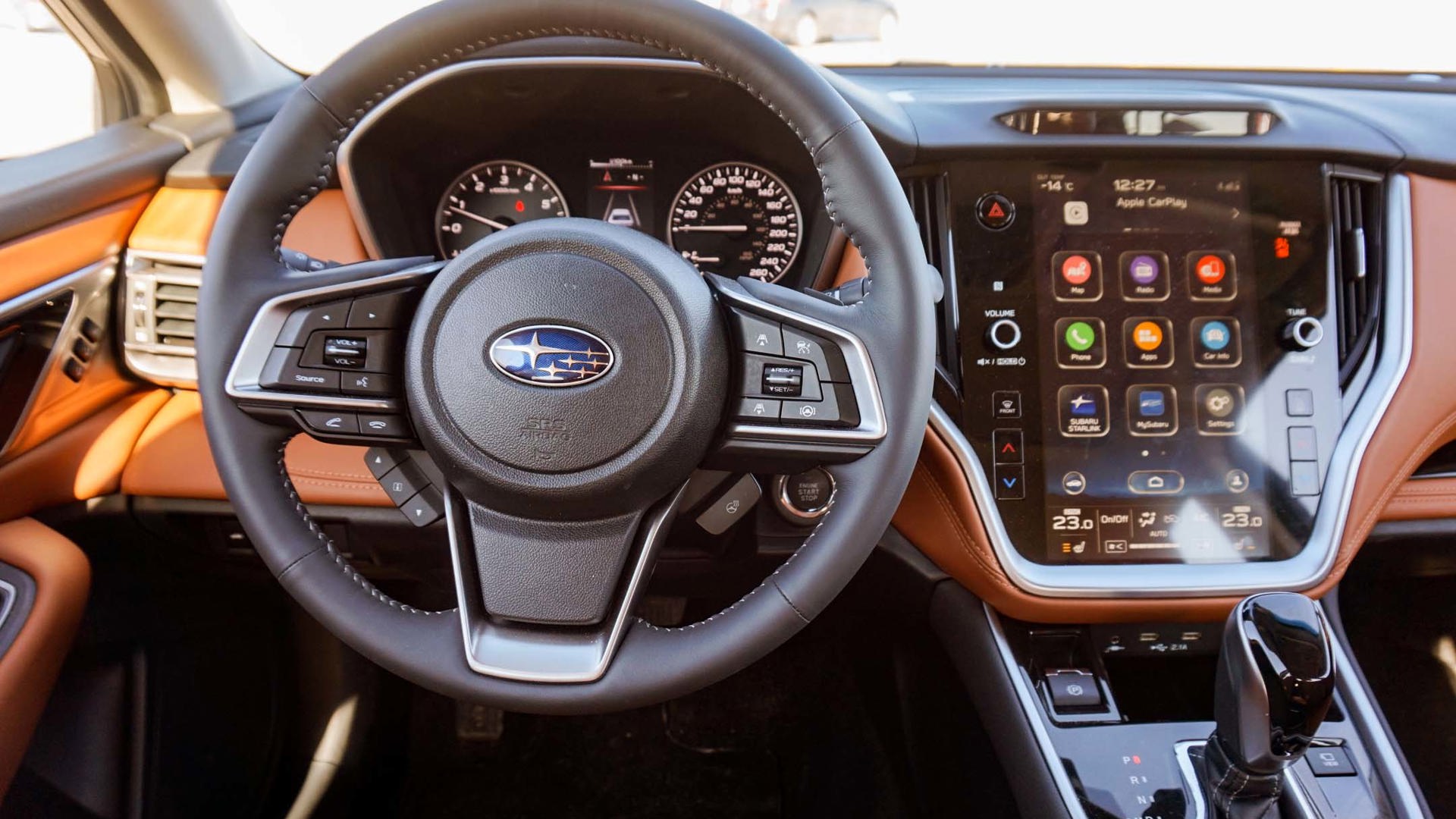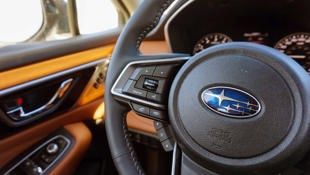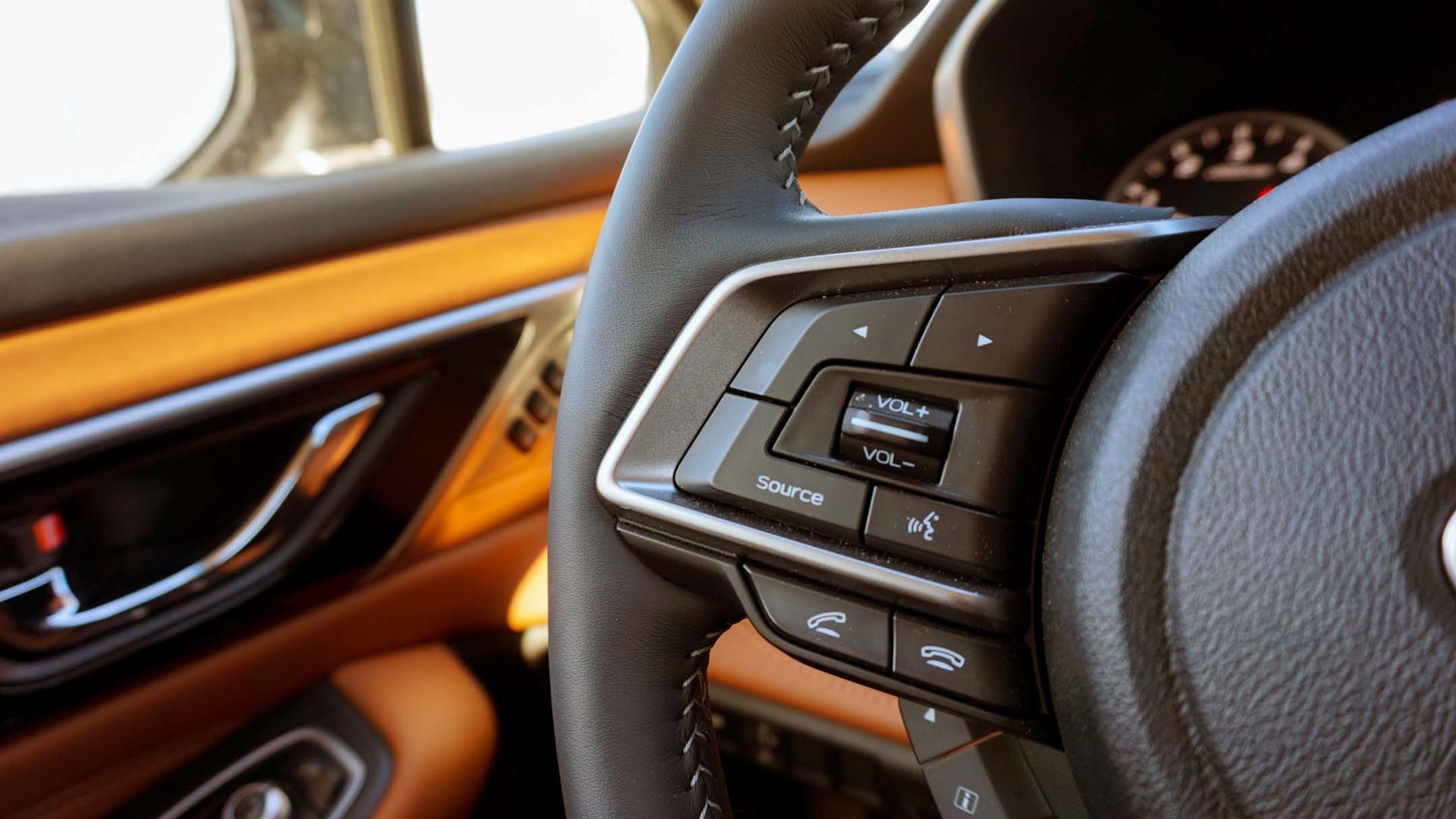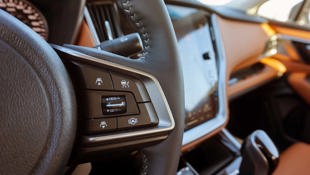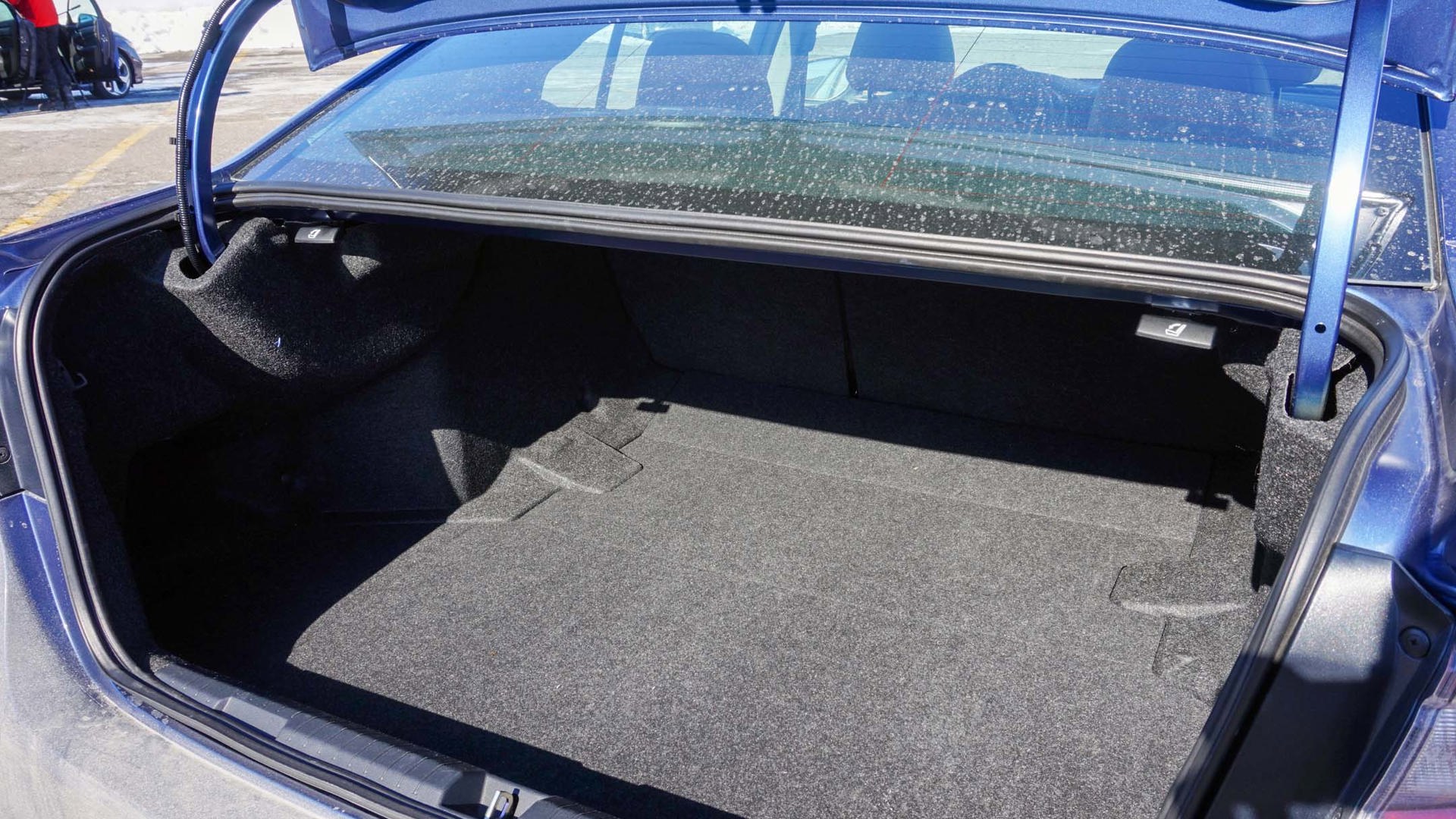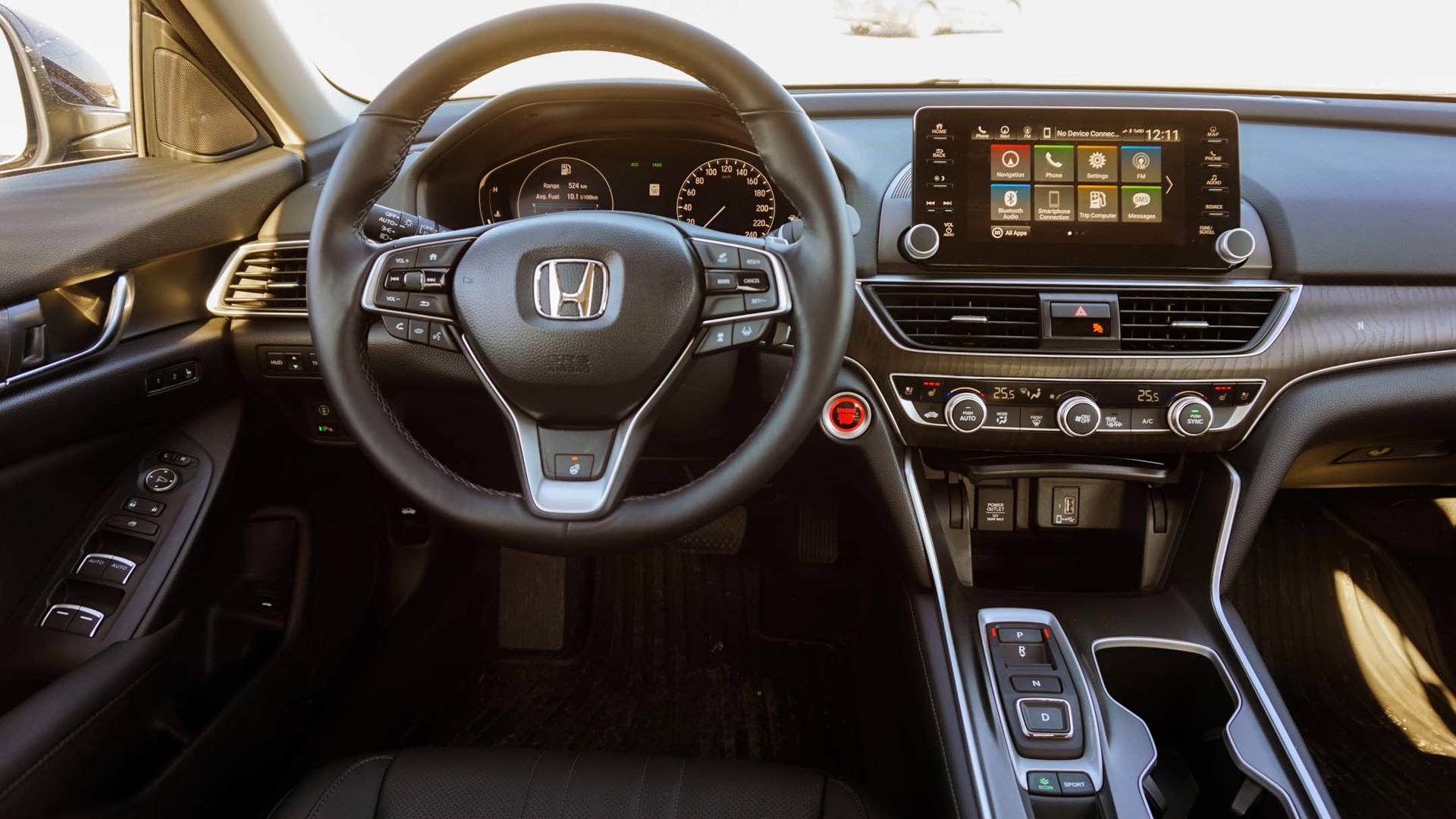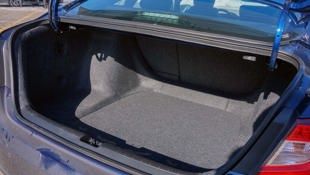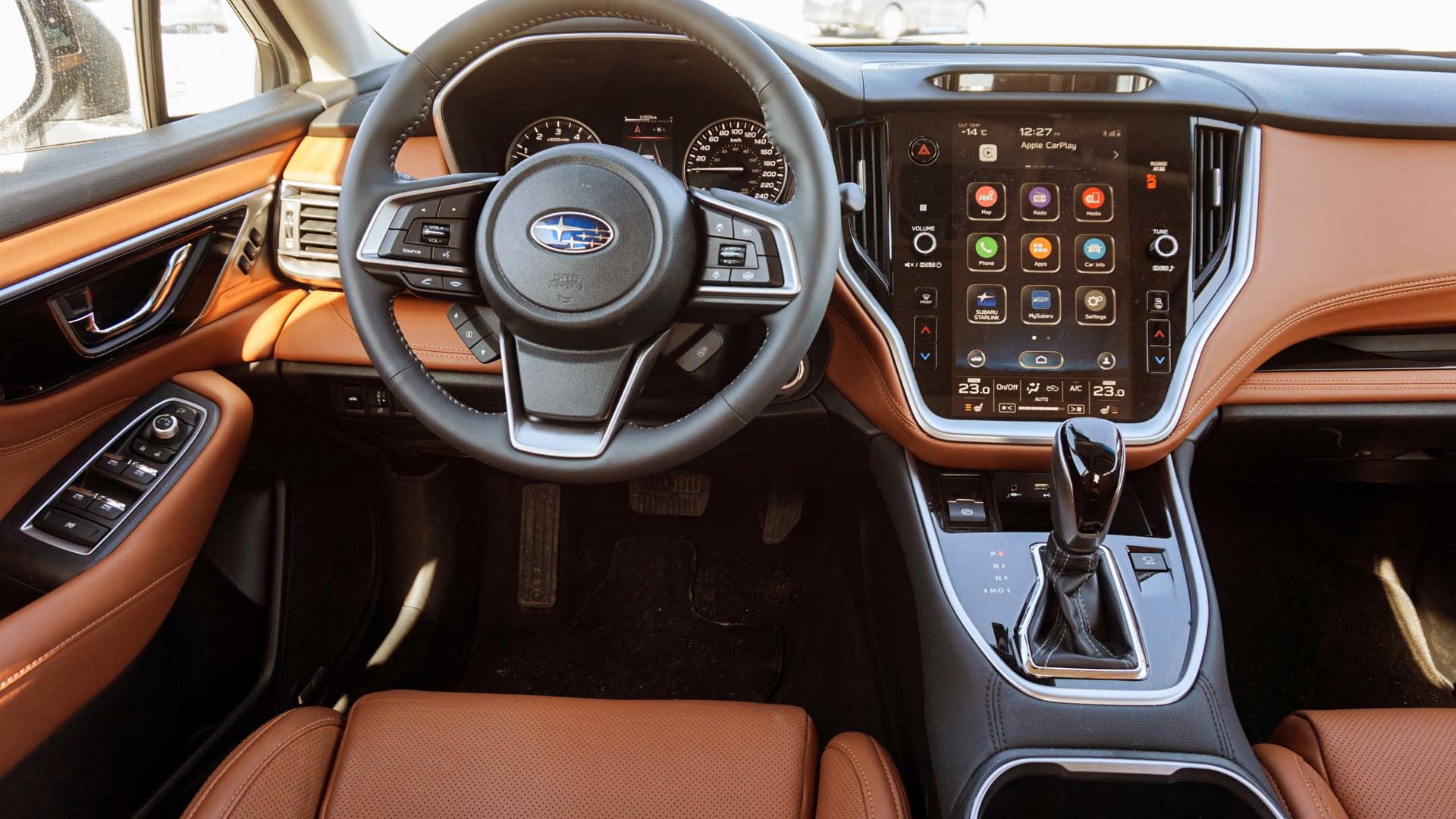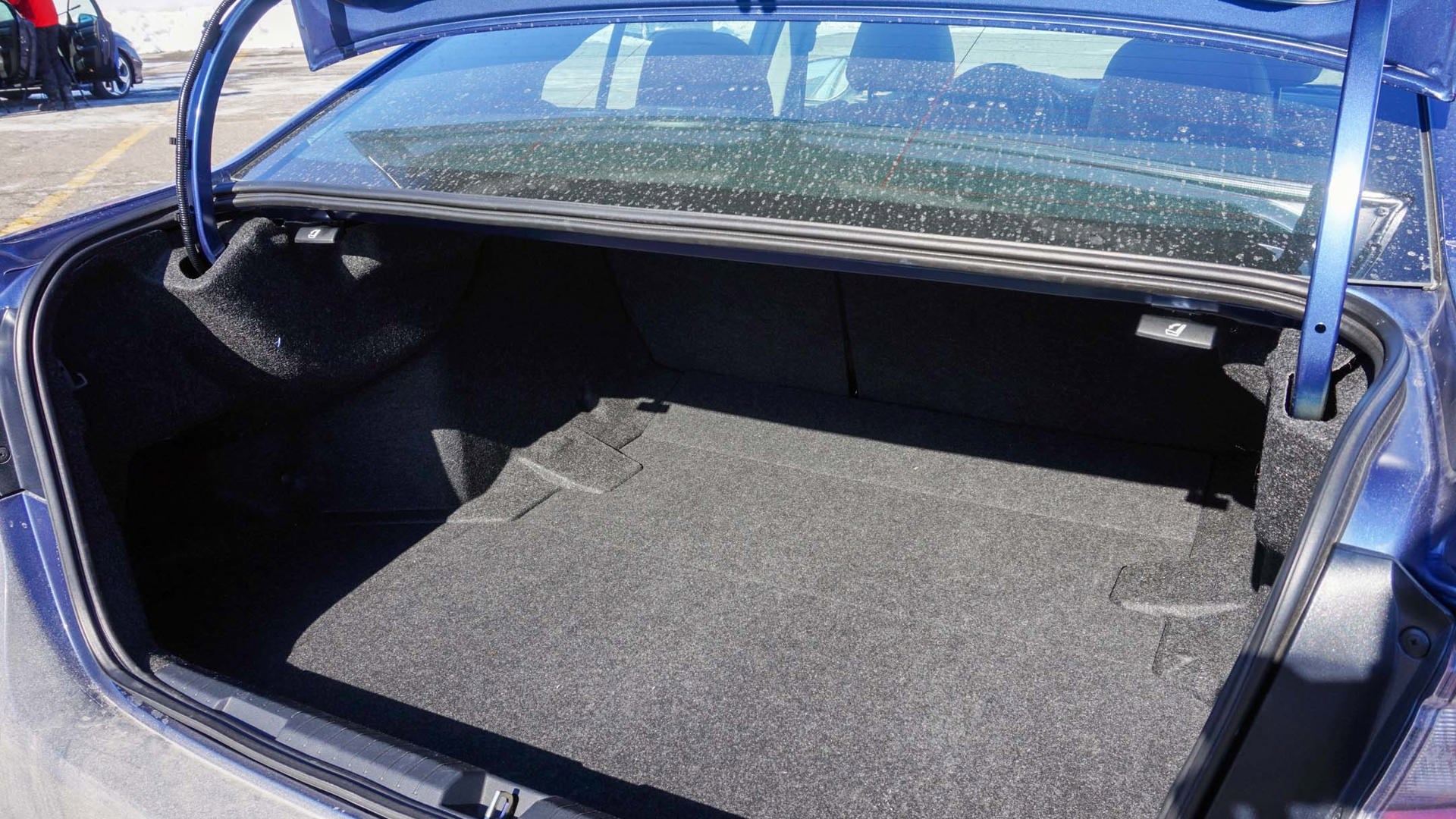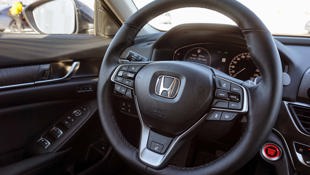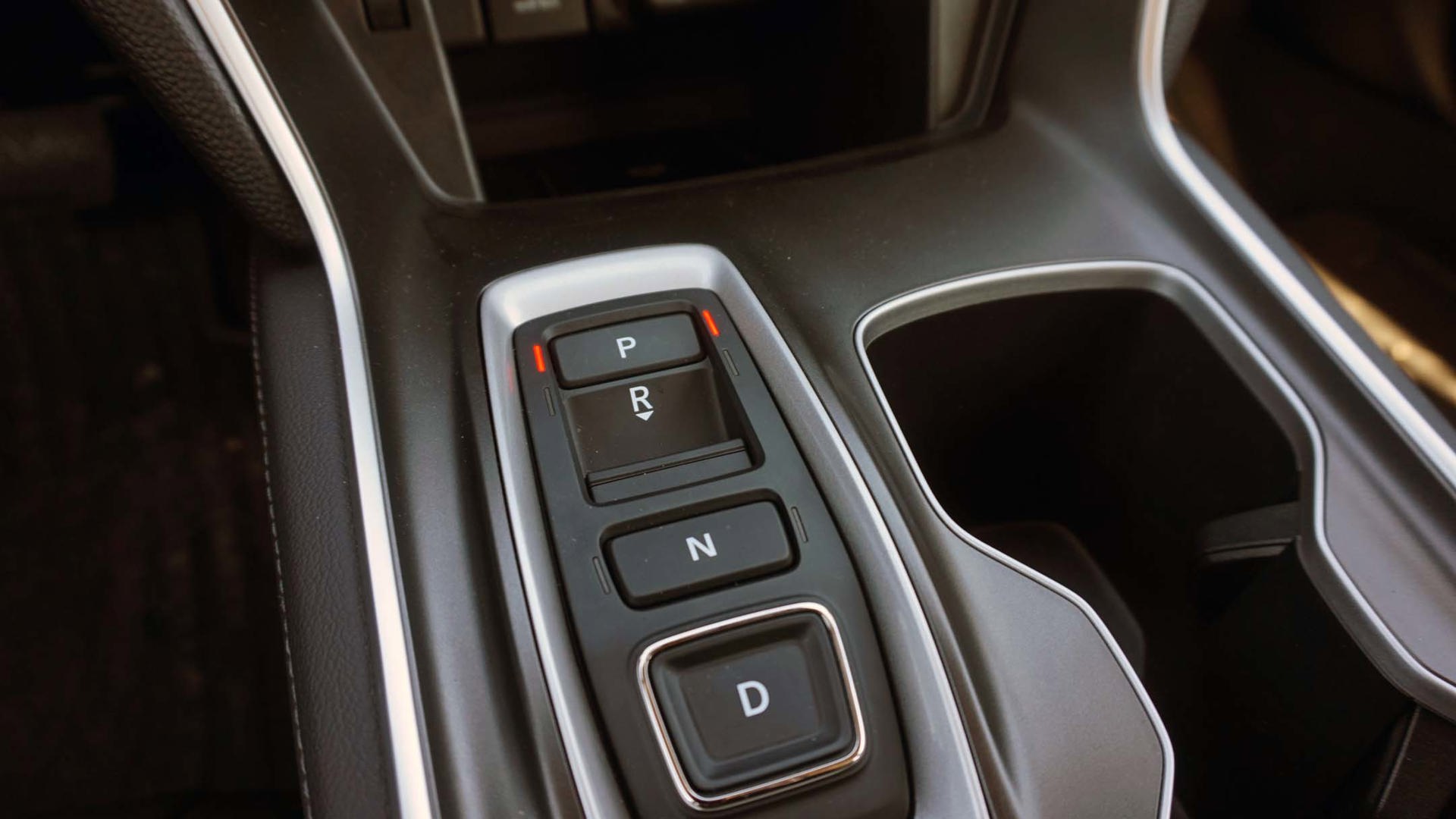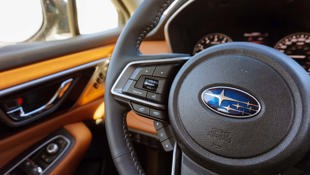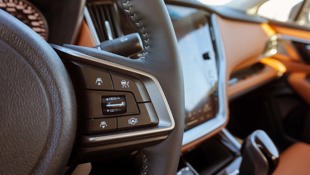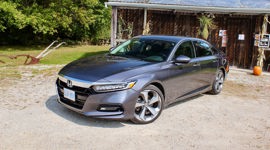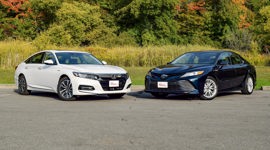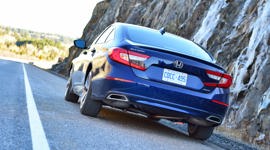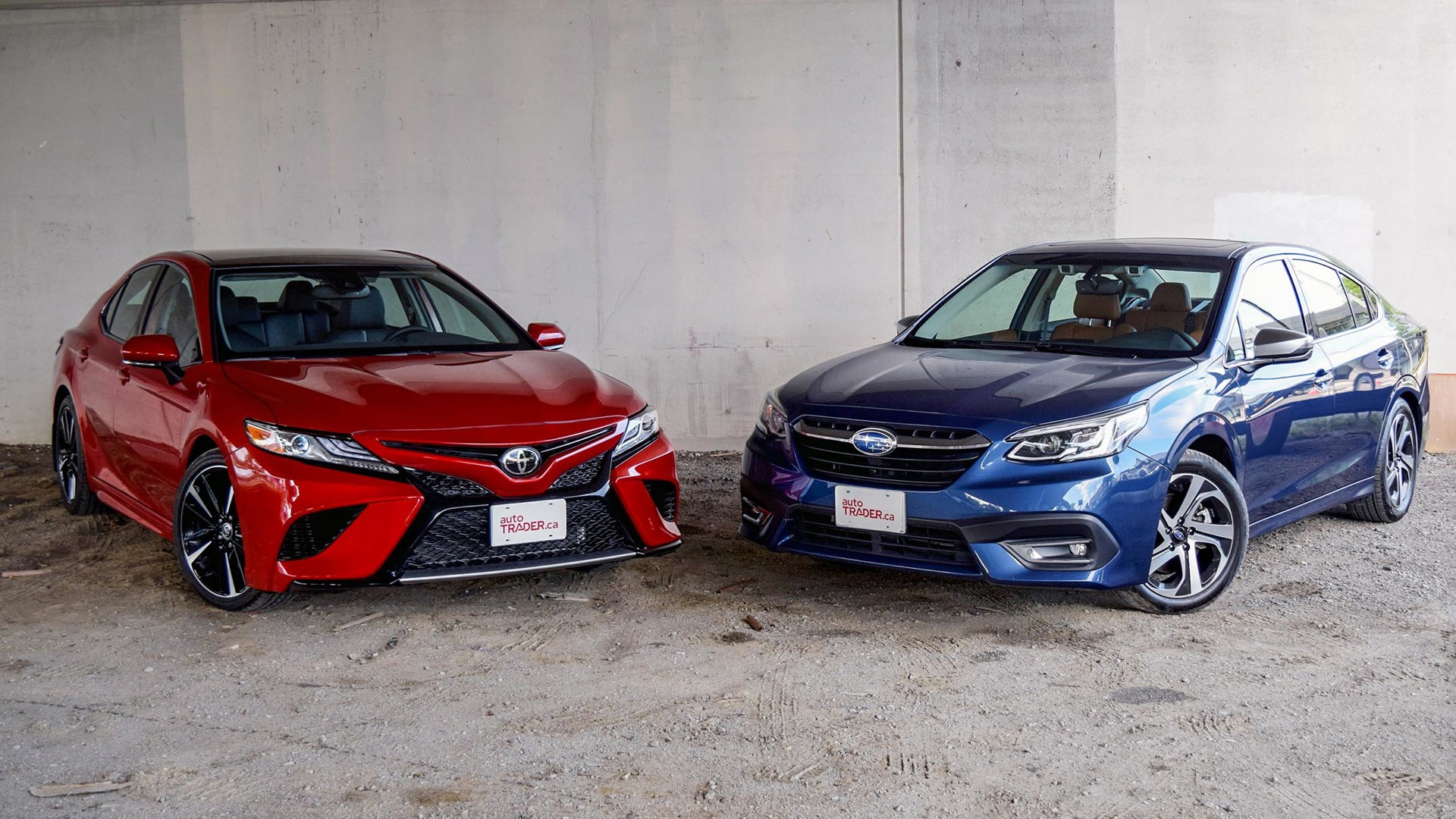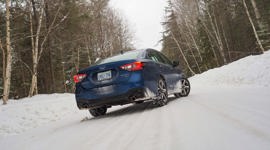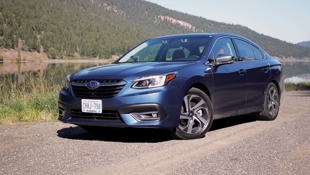Comparison Data
|
2020 Honda Accord Touring 2.0
|
2020 Subaru Legacy Premier GT
|
|---|---|
|
Engine Displacement
2.0L
|
2.4L
|
|
Engine Cylinders
I4
|
H4
|
|
Peak Horsepower
252 hp @ 6,500 rpm
|
260 hp @ 5,600 rpm
|
|
Peak Torque
273 lb-ft @ 1,500–4,000 rpm
|
277 lb-ft @ 2,000–4,800 rpm
|
|
Fuel Economy
10.4/7.4/9.1 L/100 km cty/hwy/cmb
|
9.9/7.3/8.7 L/100 km cty/hwy/cmb
|
|
Cargo Space
473 L
|
428 L
|
|
Base Price
$40,190
|
$39,095
|
|
A/C Tax
$100
|
$100
|
|
Destination Fee
$1,655
|
$1,650
|
|
Price as Tested
$41,945
|
$40,845
|
|
Optional Equipment
None
|
None
|
There’s no denying that cars – and sedans in particular – are dying a sad and swift death under a stampede of swole sport utilities.
Forget efficiency, affordability and drivability; it’s size that reigns supreme these days. Give me utility or give me death, as the saying goes. (OK, I made that up, but you get the point.)
Yet for those who don’t mind sacrificing some of the space they’ll seldom use anyway in favour of a family sedan that ticks those three magical boxes mentioned above, at least a couple of outstanding examples remain on the market. Take the 2020 Subaru Legacy and Honda Accord, two compelling cars that are as unique as they are, well, good.
Styling
Suffice to say neither sedan is going to turn heads based on their unspectacular exteriors, though they’re both far more sleek than the bulbous and brooding SUVs taking up residence in every other parking spot at the neighbourhood ice rink.
To describe the new Legacy in a word, “bland” probably best fits the bill. Compared to some of the cool concepts Subaru’s designers churn out, the production versions are duller than an Edison bulb. The latest Legacy, which was newly redesigned for 2020, is no exception, with an outward appearance that’s almost identical to the last snooze-inducing version.
Inside, however, is a completely different story – particularly in the Premier GT trim tested here, with its caramel-coloured leather upholstery a sight for sore eyes. The massive 11.6-inch touchscreen affixed to the dash helps grab attention, too, its vertical orientation standing out from the more common (and smaller) horizontal screen found in the Accord.
The blunt-nosed Accord is the prettier of the pair, though that’s not saying much. The tester here, a Limited 2.0, boasts some of the best-looking factory wheels on the market today, but the rest of the exterior is almost as understated as the Legacy’s. It does feature something of a sportier silhouette, however, with a sportback-like rake to the roofline.
Crawling inside the top trim, it’s clear Honda is playing it safe here – and, indeed, safer than Subaru is with its midsize sedan. Black on black (on black on black) is the theme, although there is some plastic trim painted to look like open-pore wood that’s a surprisingly nice touch.
Legacy: 6.5; Accord 7
Practicality
As far as family haulers go, sedans aren’t the most functional options out there – at least not in a traditional sense. Since practicality and utility usually get all muddled up in our minds, the advantages minivans and SUVs have over sedans is obvious. Looking past those apples to oranges comparisons, however, results in two cars that, while not quite utilitarian, are rather useful.
For starters, being traditional sedans means both the Legacy and the Accord offer out-of-sight-out-of-mind appeal; stow your stuff in the trunk and prying eyes are none the wiser. The Accord has slightly more outright volume (473 L versus 428 L), though it’s a virtual deadlock when it’s time to load luggage in the back.
Both cars feature 60/40 folding rear seats for longer items, but the Legacy also has fixed mounting points on its roof so crossbars can be added to keep skis out of the cabin if you’re so inclined. It also means a carrier can be strapped to the top for added cargo capacity when it’s needed.
Moving to the passenger compartment, four adults can fit comfortably inside both cars, with the Accord boasting more headroom up front but less in the back. Accommodating my 6'3" frame took far too much fiddling with the power-adjustable driver’s seat, and even then I was left feeling cramped and uncomfortable. The comparably restricted rear seat headroom in the Legacy probably isn’t a problem for most sedan shoppers, and there’s certainly enough legroom in the back to satisfy occupants of varying heights.
Legacy: 7.5; Accord: 7
Features
The biggest selling point of the Legacy is the full-time all-wheel drive system that underpins it. Other brands have recently set out to topple this advantage – Nissan added all-wheel drive to its Altima last year, while Toyota will soon offer it on the Camry – but Honda isn’t one of them. That means shoppers in search of all-wheel traction won’t find it in the Accord. Should that be a deal-breaker for those considering the Accord? Not at all, and it’s certainly not a replacement for winter tires no matter what part of Canada you call home.
Putting power down to more wheels is the only real leg up the Legacy has when it comes to features, with the Accord matching it stride for stride and even besting the Subaru in some areas.
You’ll find creature comforts aplenty in both cars, with standard heated front seats, and a heated steering wheel and heated rear seats included in most models. Ventilated front seats are added in both cars’ top trims. The Accord also features standard active noise cancellation and dual-zone automatic climate control, the former of which isn’t offered in the Legacy at all while the latter is included in all but base models (the entry-level version gets a single-zone system).
For the technophiles, there’s smaller seven- or eight-inch touchscreens to operate the Accord’s infotainment system, but just like in the Legacy, Apple CarPlay and Android Auto are standard. The Accord also boasts a Wi-Fi hotspot in the top trim, something not offered in Canadian versions of the Legacy. (Interestingly, Wi-Fi comes in every Honda CR-V sold here.) The base Legacy features a pair of seven-inch touchscreens that split infotainment and climate control duties, while every other model gets the larger touchscreen that centralizes everything into one command centre.
Legacy: 8.5; Accord: 9
Safety
Both cars include well-rounded safety suites on all models, though enhancements can be had in higher trims. For the Legacy, there’s Subaru’s venerable EyeSight suite of features that’s standard and better than ever. The system, which uses a set of stereoscopic cameras mounted behind the windshield, now includes a lane-centring function that – you guessed it – keeps the car centred between lane markings when the adaptive cruise control function is activated.
Other advanced safety features that make up the EyeSight suite include lane-keep assist and forward automatic emergency braking, among others. There’s also a heap of other helpful safety features that are added to the second trim and up, including reverse automatic braking and blind-spot monitoring, while the loaded Premier model gets a front-view camera and a distraction prevention system that uses a tiny camera to keep an eye on which direction the driver is looking.
The Accord’s safety story is a similar one, with standard advanced safety features ranging from lane-keep and adaptive cruise to automatic high-beams. Since the Accord is still offered with a manual transmission – praise the driving deities, because that’s a rarity in this day and age – only automatic models get an adaptive cruise control system that works in stop and go traffic, which is more of a footnote than anything else. There’s also a head-up display system in the top trim, a feature not offered in the Legacy, and a distraction warning system that kicks in if the car starts to drift and wander too much.
In crash testing conducted by the Insurance Institute for Highway Safety (IIHS), both the Accord and Legacy performed admirably, earning top marks for their abilities to withstand impacts. That the Legacy is available with steering-responsive headlights makes it an IIHS Top Safety Pick+ winner, while the Accord’s lighting makes it a Top Safety Pick alone.
Legacy: 9.5; Accord: 9.5
User Friendliness
What both these cars do best is deliver feature-rich experiences that aren’t overly difficult to enjoy. There are, of course, caveats, starting with that massive touchscreen in the Legacy. The centrepiece of the cabin simply can’t be ignored. Unfortunately, that means there’s no way to turn a blind eye to the sun’s glare that’s cast off its sizeable surface, making it difficult to read at times.
Another issue with the oversized screen in the Legacy is its limited smartphone functionality. While Android Auto and Apple CarPlay are part of the package, they only show up on the top half of the screen rather than the entire thing, forcing users to strain their eyes when looking at Google Maps or whichever audio app they’re using.
Other annoyances in the Legacy include distraction monitoring and lane-departure warning systems that are perhaps a touch too sensitive, emitting audible warnings with far too much frequency. That Subaru centralized almost all vehicle controls within the head unit also means there’s no button by the driver’s left knee to disengage the distraction system like there is in the Forester. Ditto the auto start/stop system, which is rather jarring and can only be disengaged through the infotainment screen.
By comparison, the Accord is just that much easier to live with – or at least that much more conventionally configured. Climate controls are more approachable, and while the touchscreen is smaller, it’s mounted higher on the dash and Apple CarPlay spans the entire 8-inch surface, which both help to provide slightly better visibility.
If there’s one area that’s the complete opposite of conventional it’s the Accord’s gear selector, which uses buttons rather than a lever. While it’s no doubt possible to grow accustomed to this type of system, there’s something unnerving about putting a vehicle in park at the press of a button that even rotary dial selectors manage to avoid.
Legacy: 7.5; Accord: 8.5
Power
Honda and Subaru both offer the choice of two engines in their midsize sedans, with the former featuring forced induction across the board and the latter sticking to natural aspiration for the entry-level option.
The Accord’s 1.5L turbo four-cylinder is the same one that powers every CR-V and most Civics sold in Canada. Output is rated at 192 hp and 192 lb-ft of torque, the latter of which kicks in at 1,600 rpm for reasonable acceleration in more miserly models.
Then there’s the 2.0L turbo found in the tester seen here, and our week together was all the better for it. With 252 hp and 273 lb-ft of torque to work with, the Accord can be a smile-inducing sedan when called upon. Better still, it can be paired with a six-speed manual in Sport 2.0 guise, making it a true rarity in the mainstream market. The tester here being a Touring 2.0 means it relied on an eight-speed automatic to move the wheels.
The Legacy comes fitted with the choice of a naturally aspirated 2.5L or turbocharged 2.4L, the latter of which is bolted under the hood of the Premier GT model tested here. Output from the turbocharged boxer engine (the pistons move side to side rather than up and down like a conventional inline four-cylinder) is similar to the 2.0L in the Accord, with 260 hp and 277 lb-ft of torque, yet the Legacy manages to feel a step or two slower than its rival.
Part of Accord’s advantage lies in its earlier torque delivery – it all comes online at an ultra-low 1,500 rpm compared to the Subaru’s 2,000 rpm – but the continuously variable transmission (CVT) in the Legacy simply can’t get the engine’s torque to the wheels quickly enough to keep up. It’s not as if the Legacy will leave drivers hanging when it’s time to pass, and is more than adequate in that department. It’s simply not as quick off the line, lacking the bravado the skinny pedal brings out of the Accord.
Legacy: 8.5; Accord: 9.5
Fuel Economy
The engineers at Subaru continue to bestow their black magic upon the brand’s vehicle lineup, delivering front-wheel drive fuel economy in full-time all-wheel drive packages. Natural Resources Canada (NRCan) rates the turbocharged Legacy at 9.9 L/100 km in the city, 7.3 on the highway, and 8.7 L/100 km combined – numbers nearly matched during our comparison, with real-world results of 9.2 L/100 km over a week of testing.
Compare that to the Accord’s NRCan-rated 10.4/7.4/9.1 L/100 km city/highway/combined consumption and it’s not quite a resounding win, but it’s an impressive one nonetheless considering the Accord powers only its front wheels. Worse still, the Accord’s actual combined consumption was closer to 10.0 L/100 km at the end of the week.
Driving Feel
This is the area in which these two take the most divergent paths. For the Legacy, it’s all about highway cruising. That means suspension that’s tuned more towards comfort and steering that’s free of feedback. Body roll is a bit much in the Legacy, but it’s nothing compared to an SUV – yes, even the driver-focussed Mazda CX-5.
In the Touring 2.0 version of the Accord, it’s like you’re getting two cars in one. It’s not quite as comfortable as the Legacy, but if the Subaru is a 9/10 in terms of on-road comfort then the Accord’s a solid 7.5.
When it’s time to blow off some steam on a winding backroad, simply hit the sport button on the centre console to engage the car’s adaptive dampers that firm up for a little fun. Engaging sport mode also dials up throttle response and adds some artificial weight to the steering system, the former of which manages to make the engine feel punchier still compared to the Legacy’s.
Legacy: 8; Accord: 9.5
Comfort
The Legacy’s leg up in terms of ride comfort doesn’t necessarily mean it’s the more comfortable car overall. While the leather upholstery in the Accord isn’t especially nice to the touch, the rest of the interior materials are. The seats themselves are also cozier, with extended time behind the wheel a bit more enjoyable in the Honda. In fact, improve ride comfort a bit – or at least swap the tires for a set with thicker sidewalls – and the Accord could probably pull some people out of their Audis and BMWs. Yes, it’s that good.
Beyond seats that are slightly less comfortable, fit and finish issues in the Legacy have a negative impact on the overall enjoyment of the space, with irritating creaks and rattles emanating from the dash of the tester seen here. Problems like this have been an increasingly prevalent problem for Subaru and take the Legacy down a notch or two from the near-premium experience Subaru is marketing.
Legacy: 7; Accord: 8
Value
Dollar for dollar, there’s little to separate the Legacy and Accord in their most expensive trims. The priciest Legacy Premier GT totals $40,845 with freight and A/C tax and feels mostly worth the price of admission – assuming, of course, interior build quality issues aren’t common.
There are, of course, more affordable versions, but that means fewer features for the price. The sweet spots for this Subaru seem to exist at either end of the spectrum, with the roughly $28,000 base model offering good value for the money thanks to its standard safety features.
And, of course, the Legacy’s standard all-wheel drive delivers added value – and that’s especially true when it’s lined up next to comparable versions of the Accord, which are more expensive. A base Accord rings in at $30,245 with freight and fees, while the top-of-the-line Touring 2.0 is priced at $41,945. Despite powering its front wheels alone, there’s some serious value in the top trim, with a sort of duality that puts it in rare company.
Legacy: 8.5; Accord: 8
The Verdict
These days, it takes something really special to turn heads in the family sedan space, and both the Subaru Legacy and Honda Accord easily do exactly that. The Legacy is a good car, but the Accord simply is a great one, earning the win here based on its ability to do so much right while delivering the type performance that’s above and beyond everything else in the segment.
